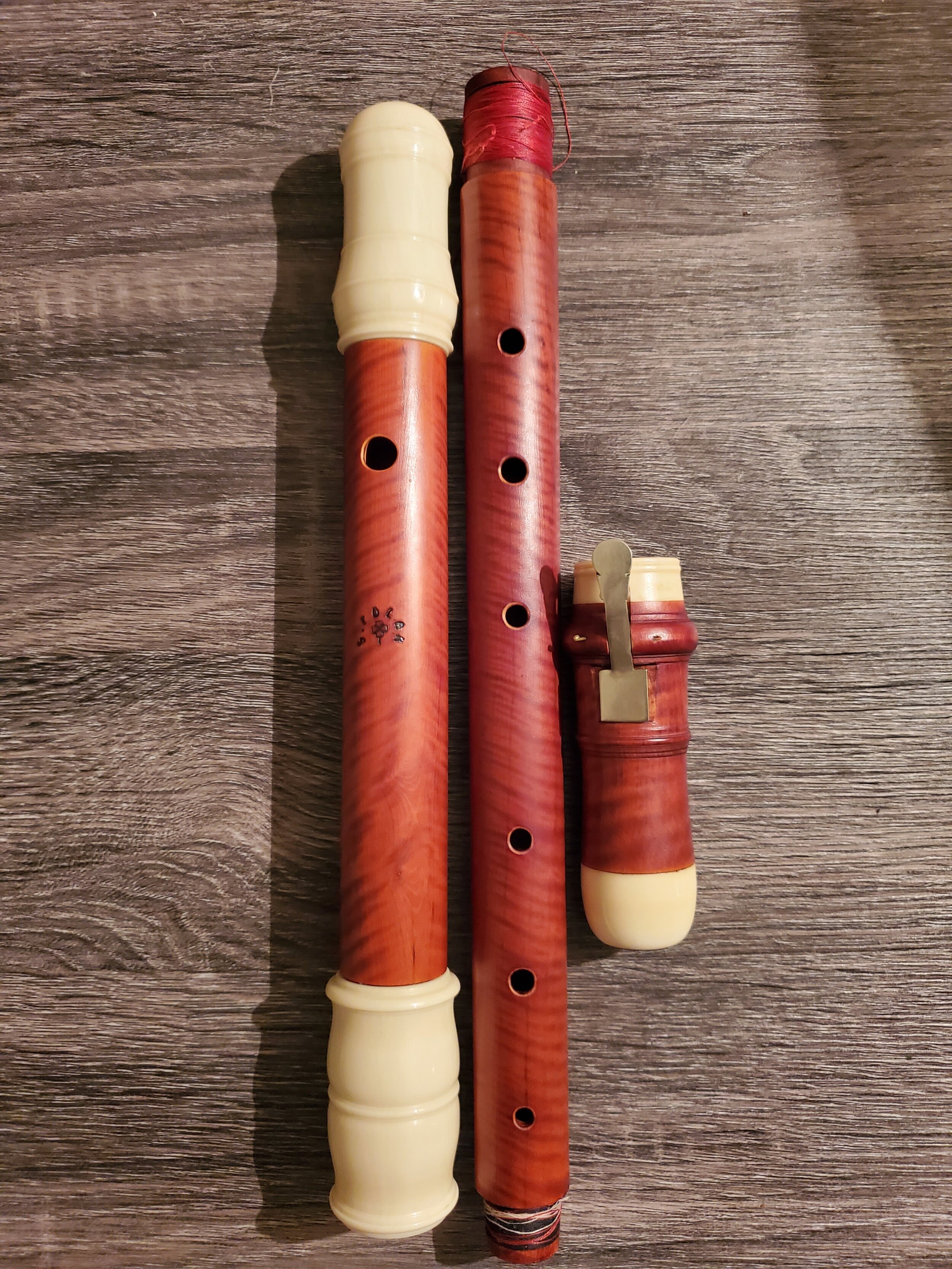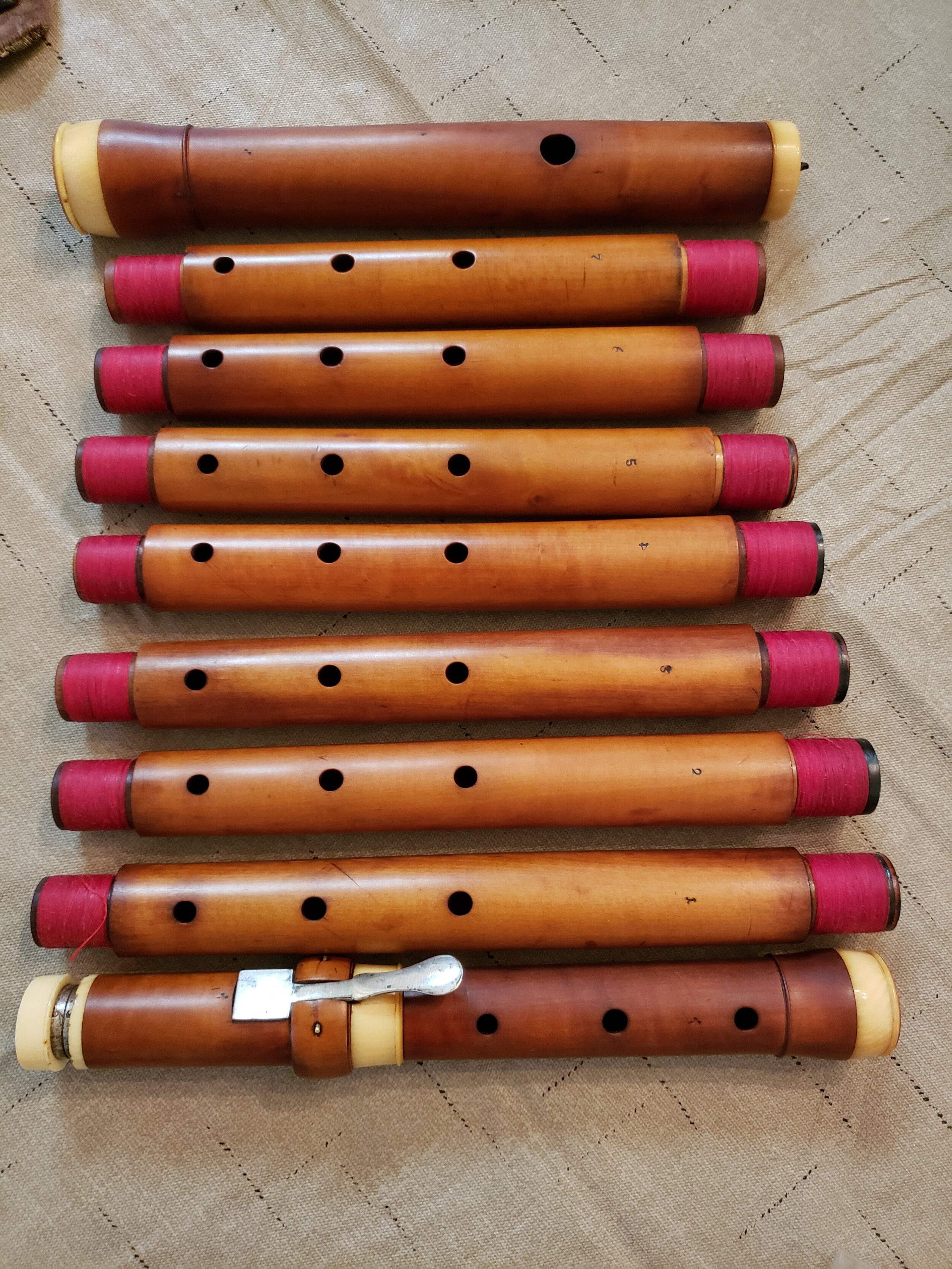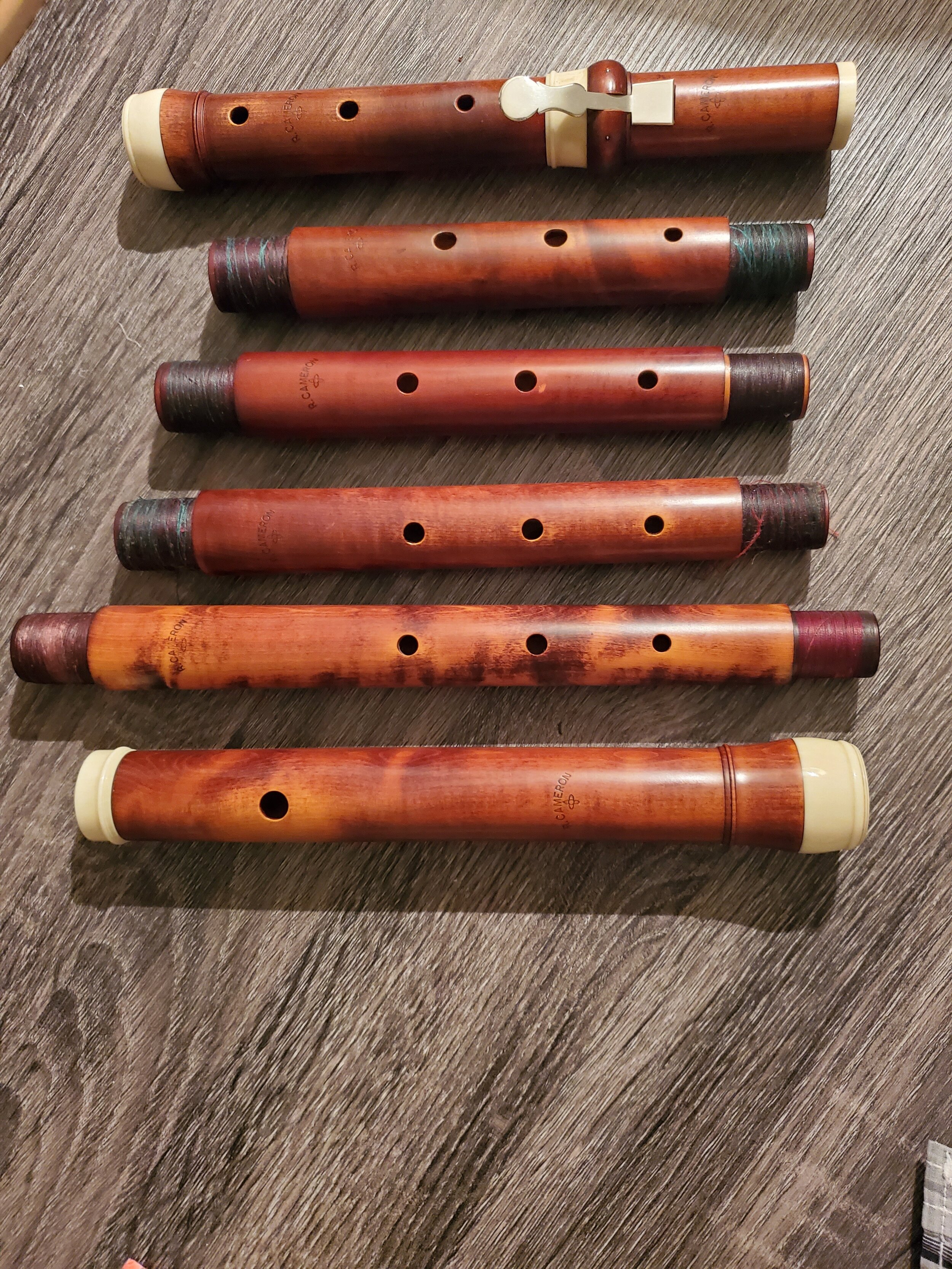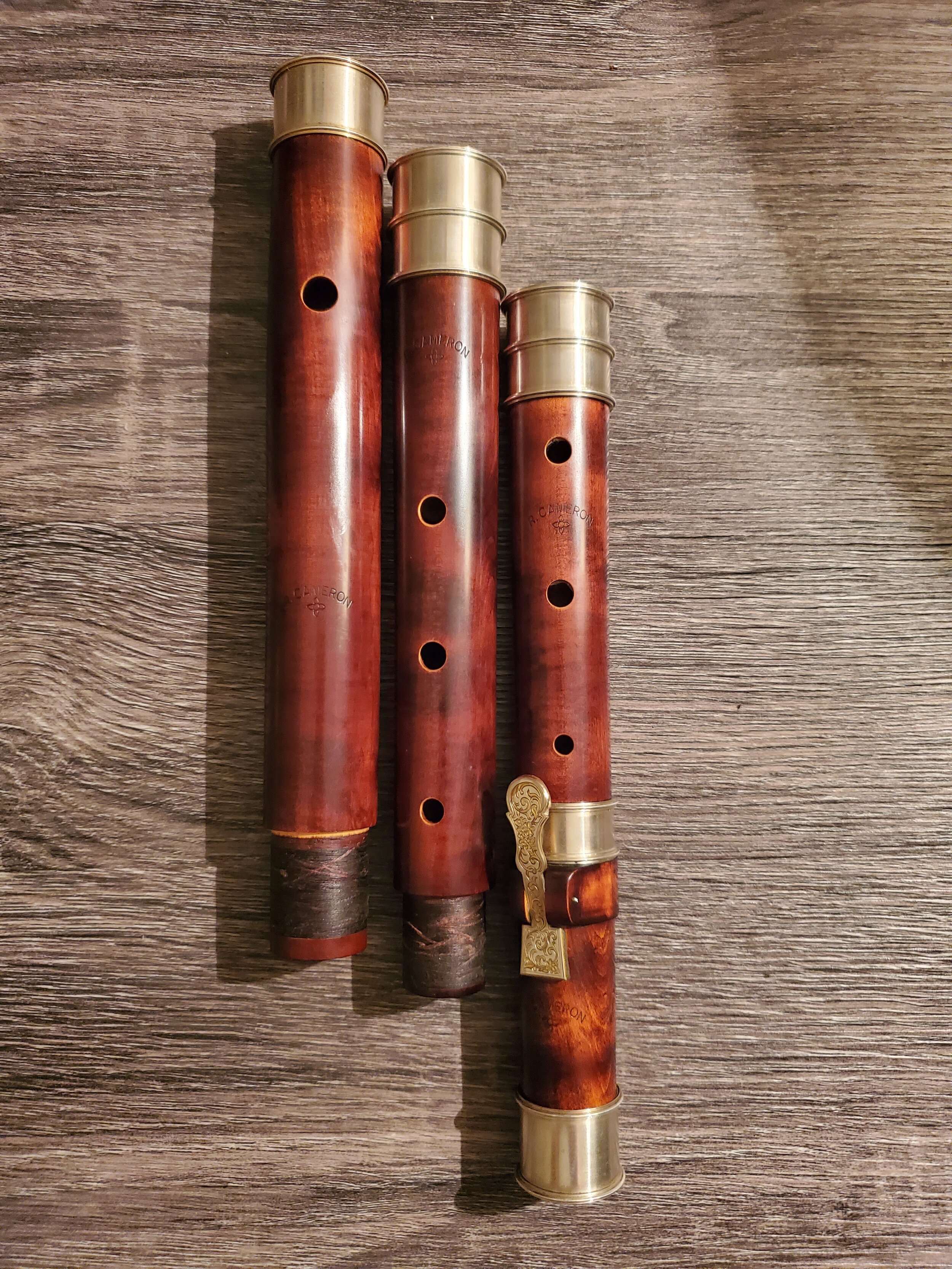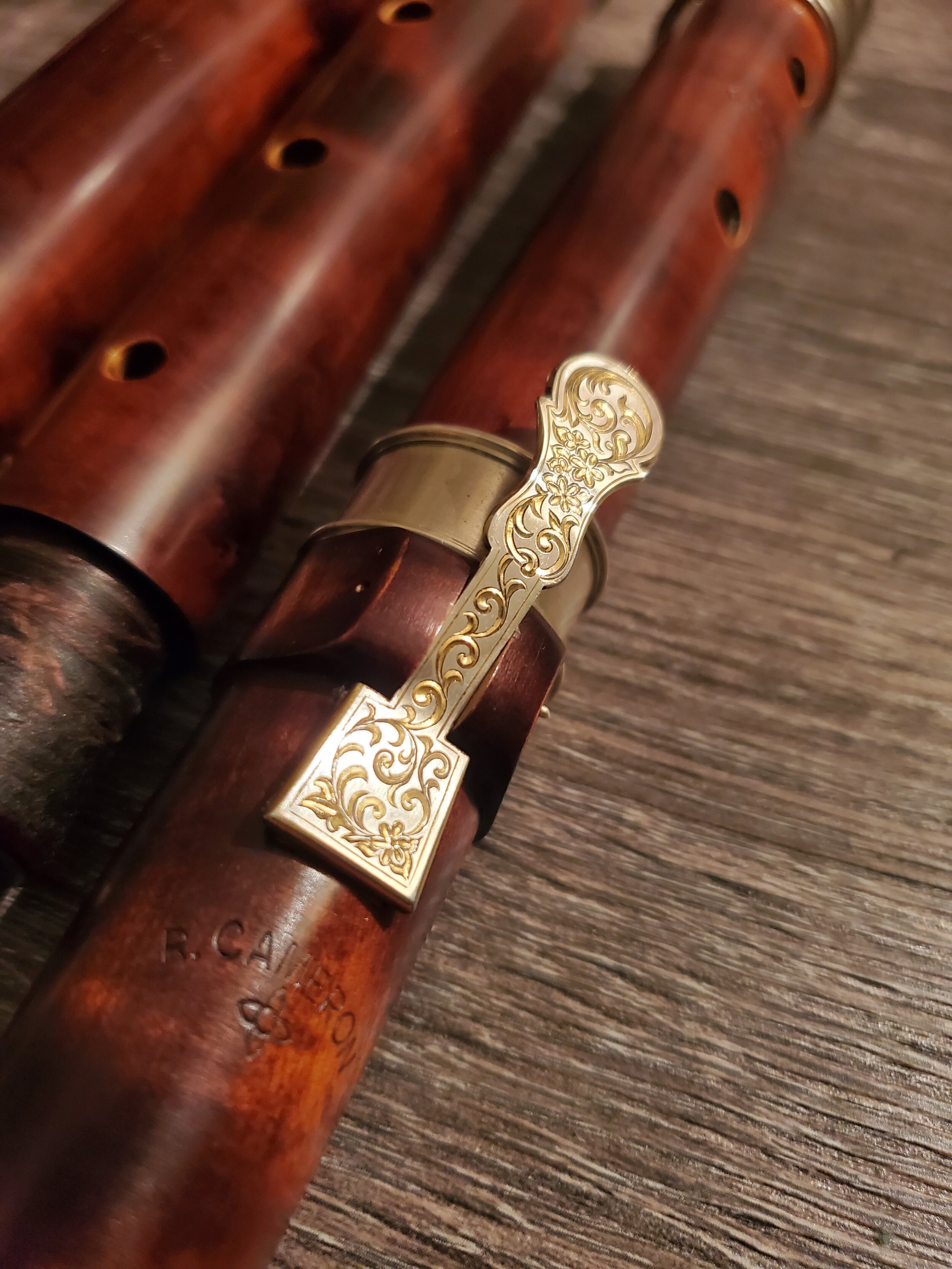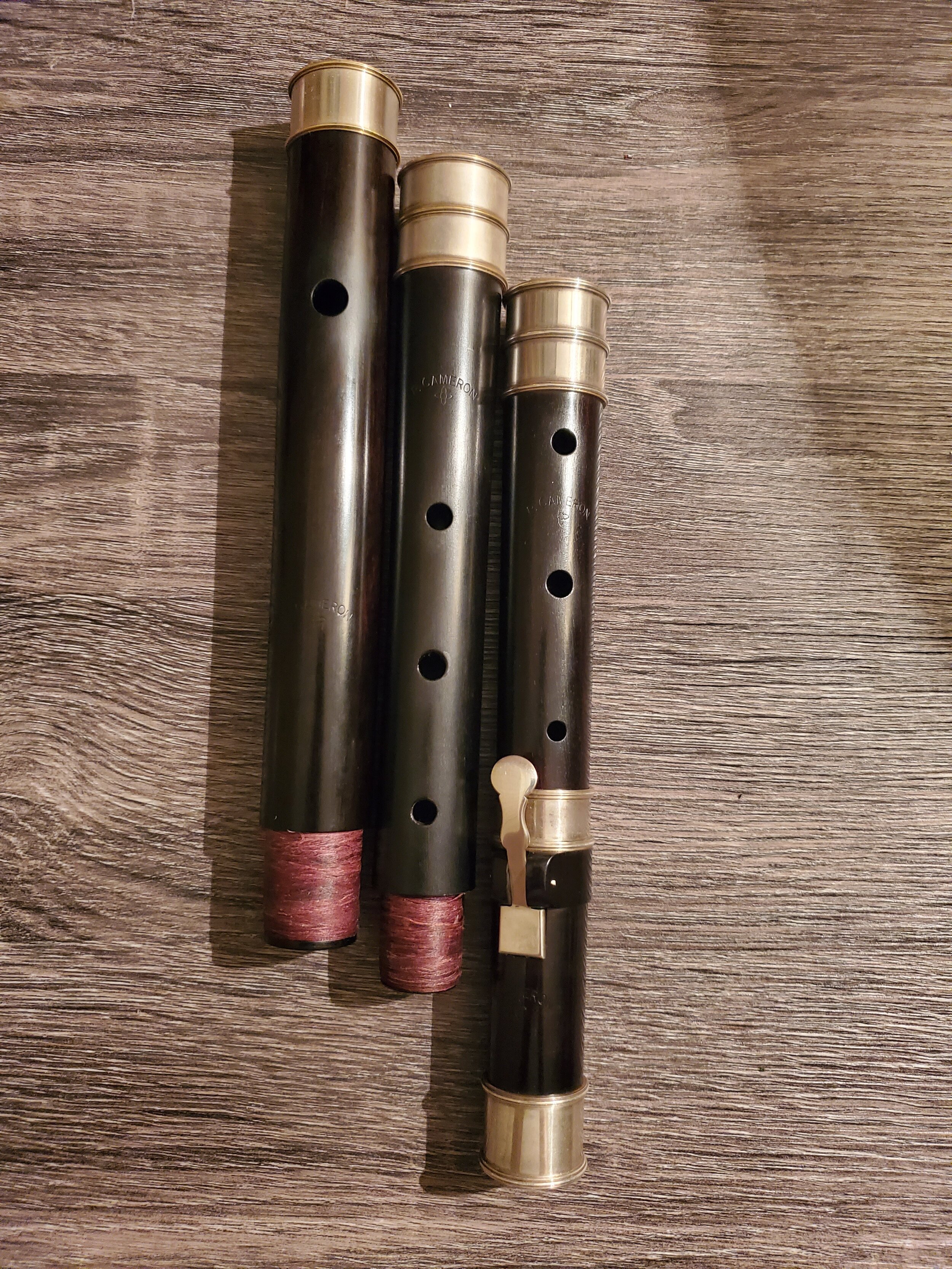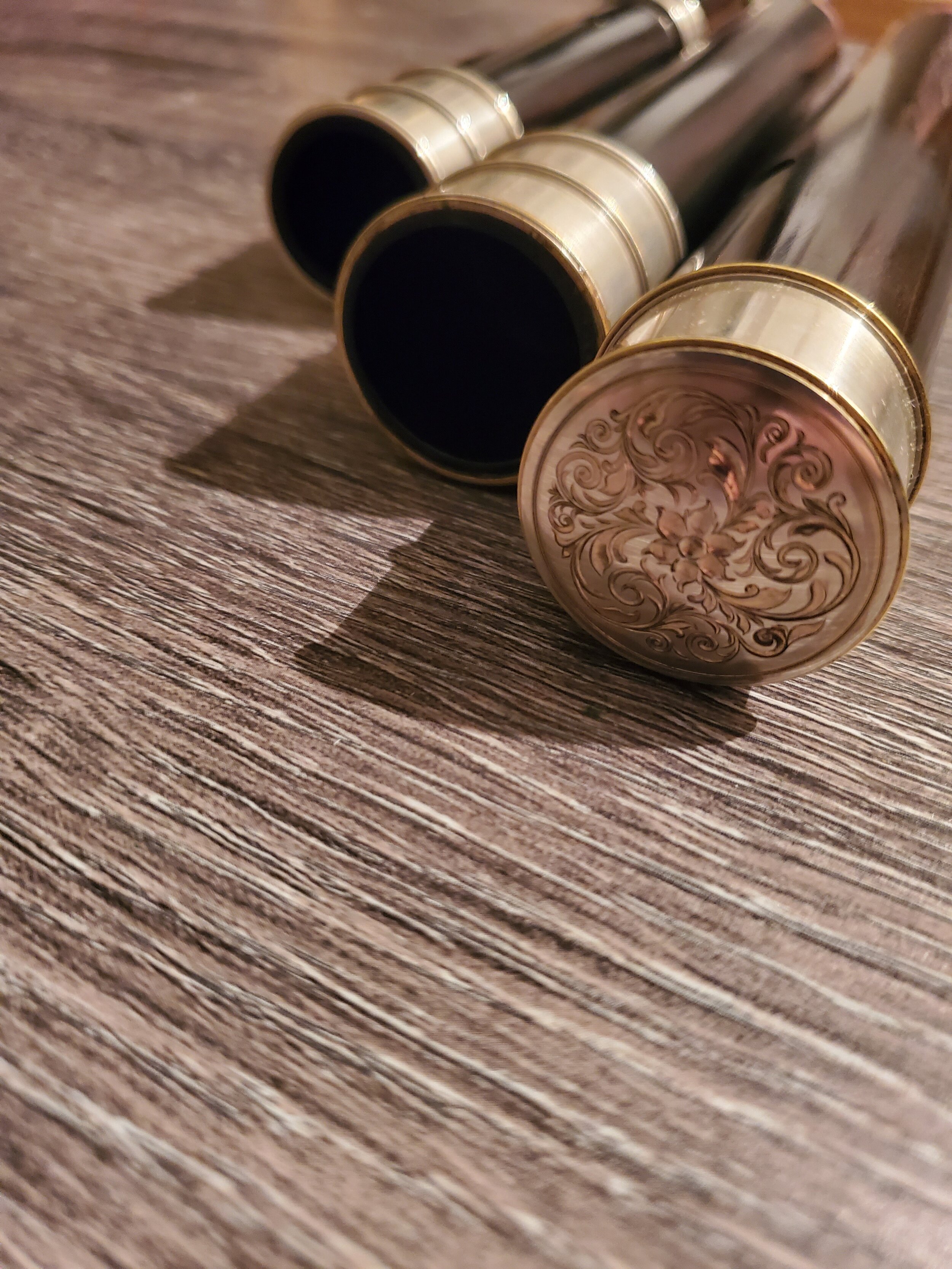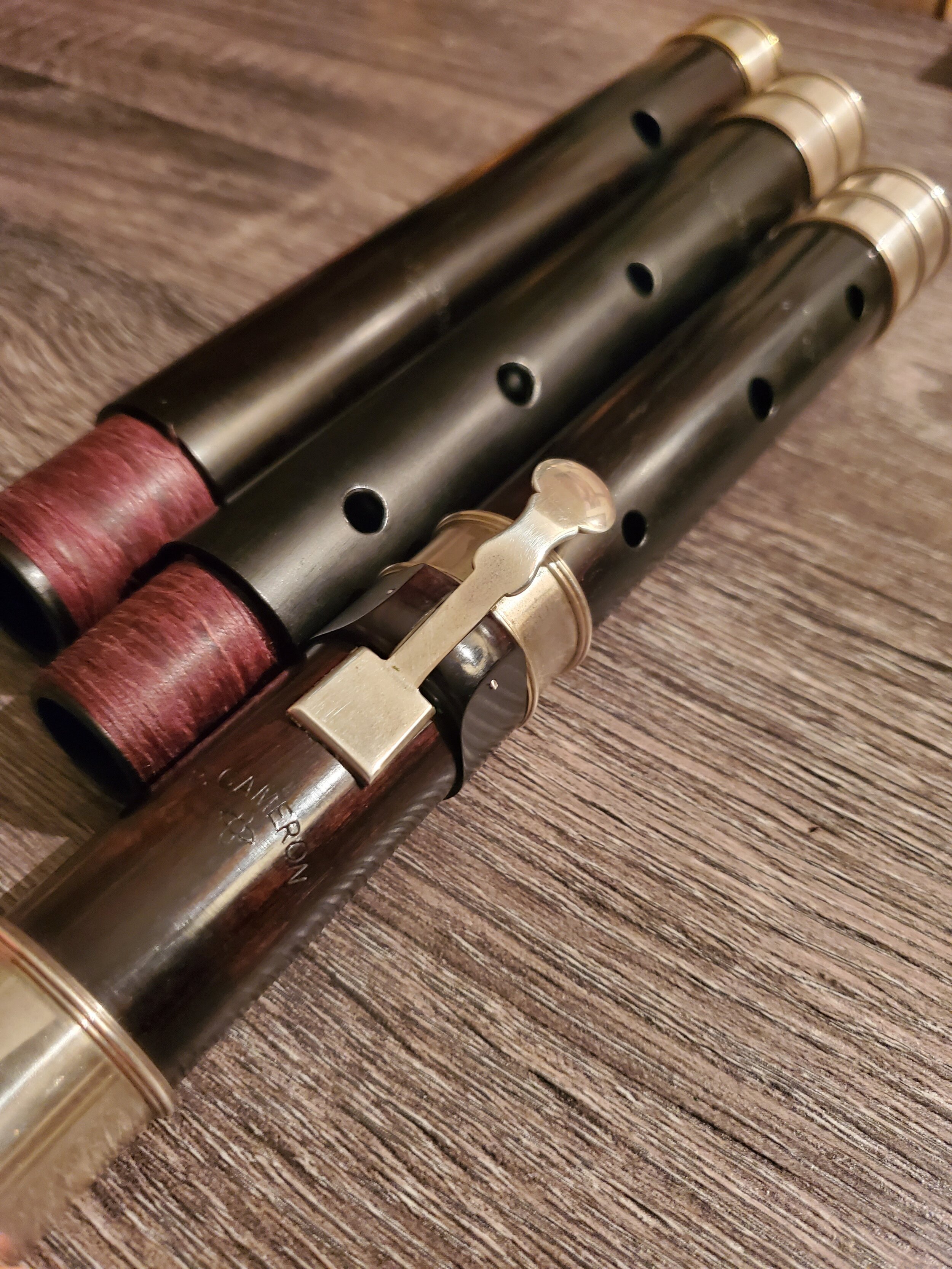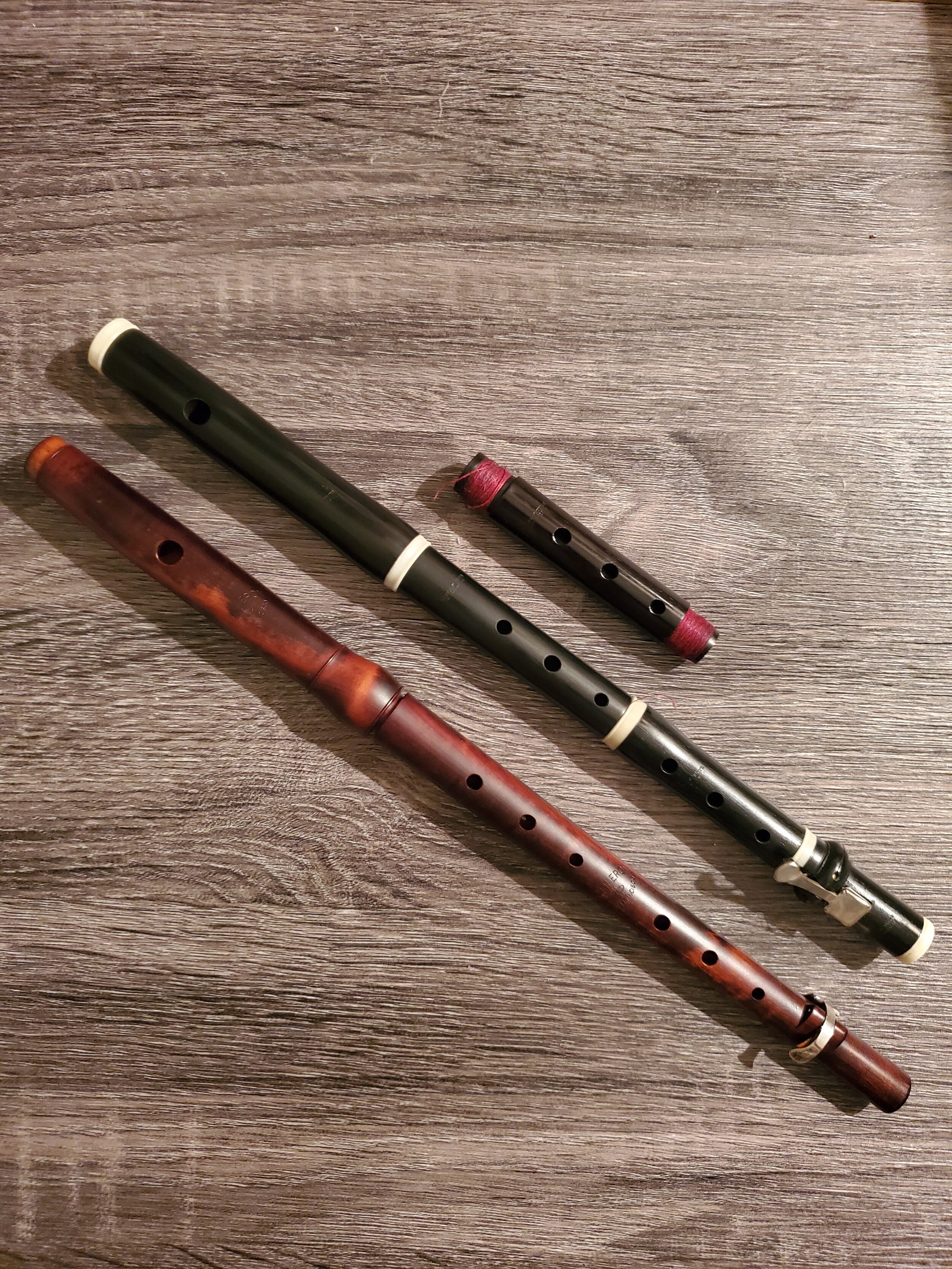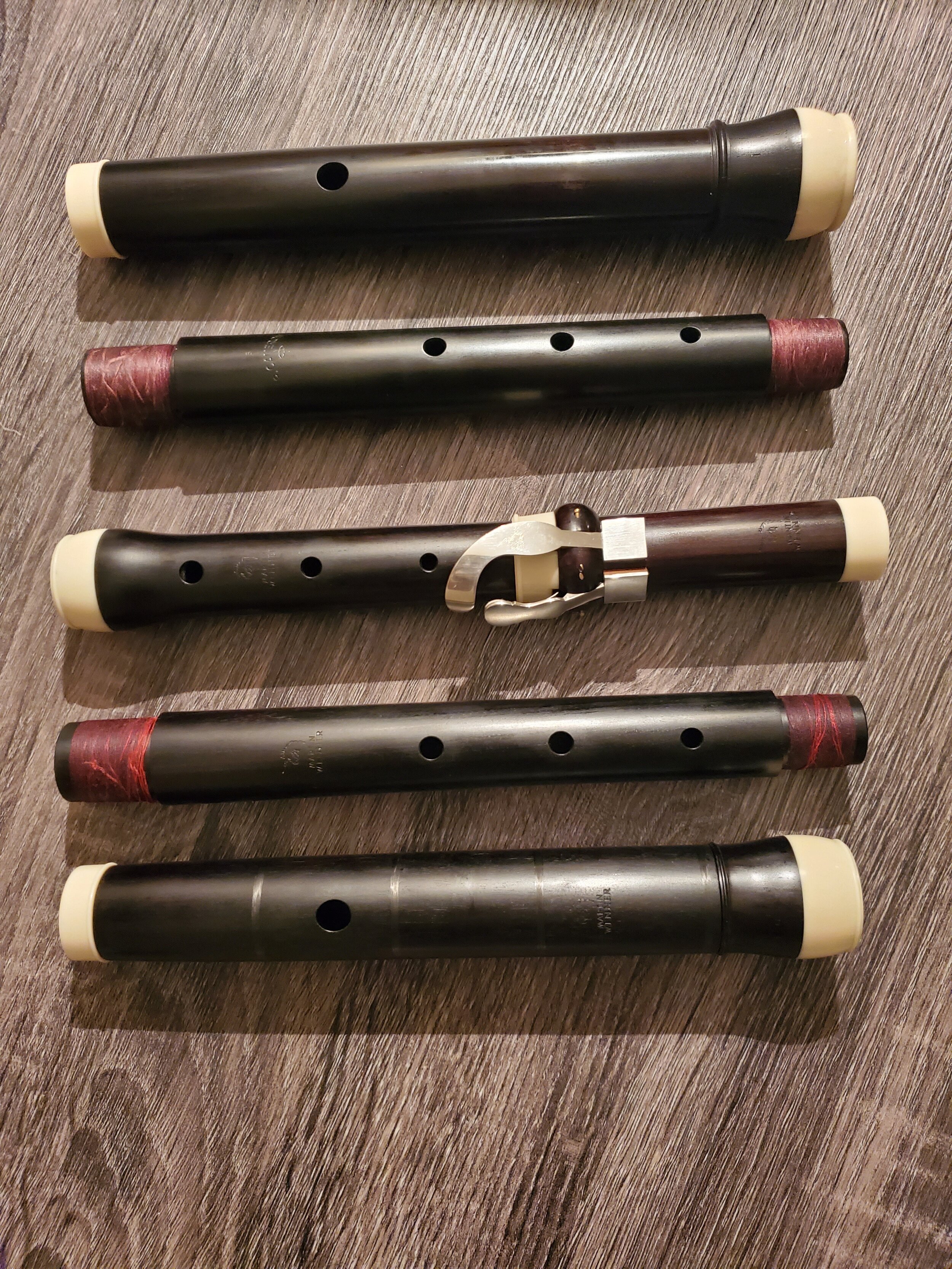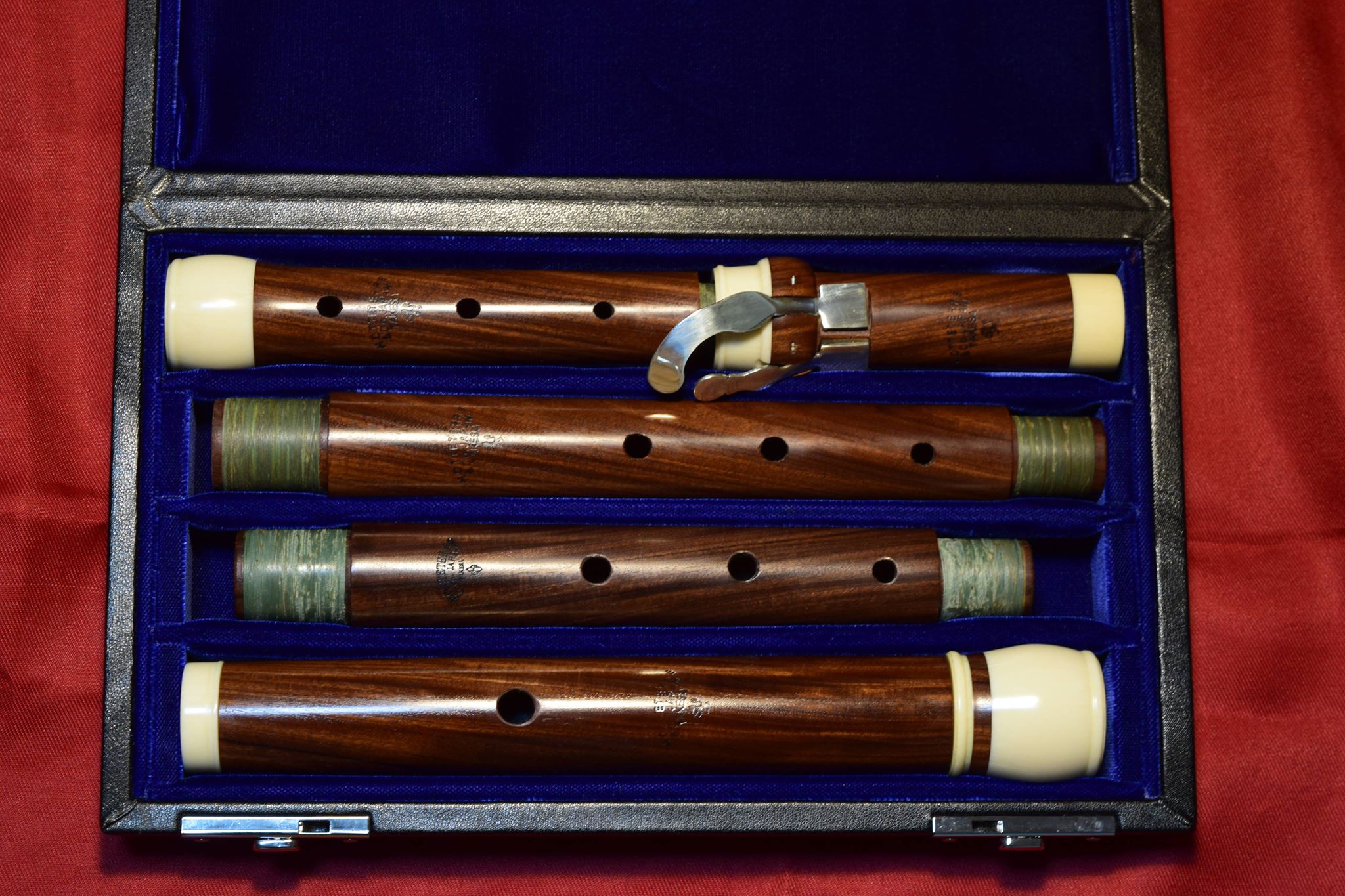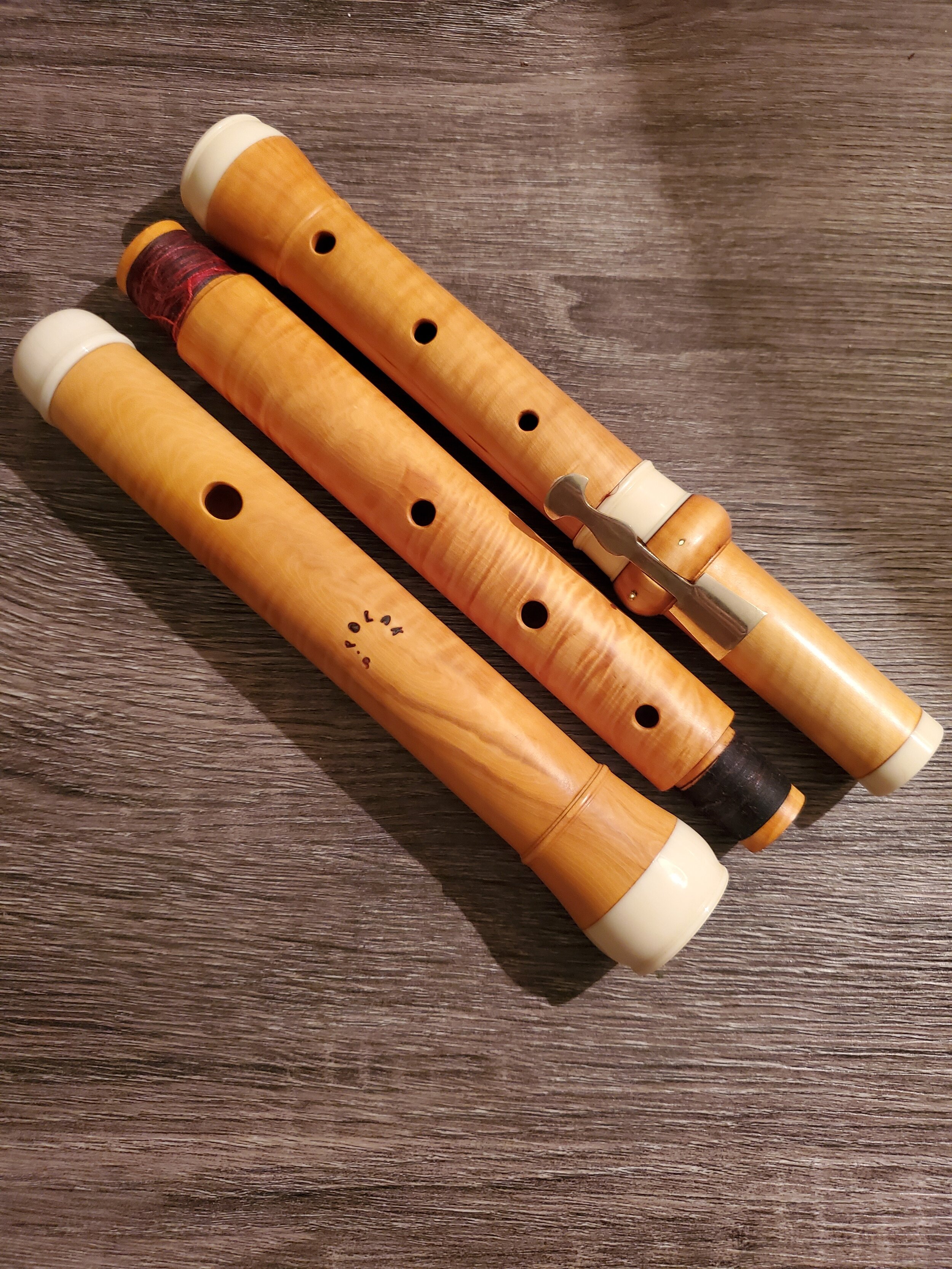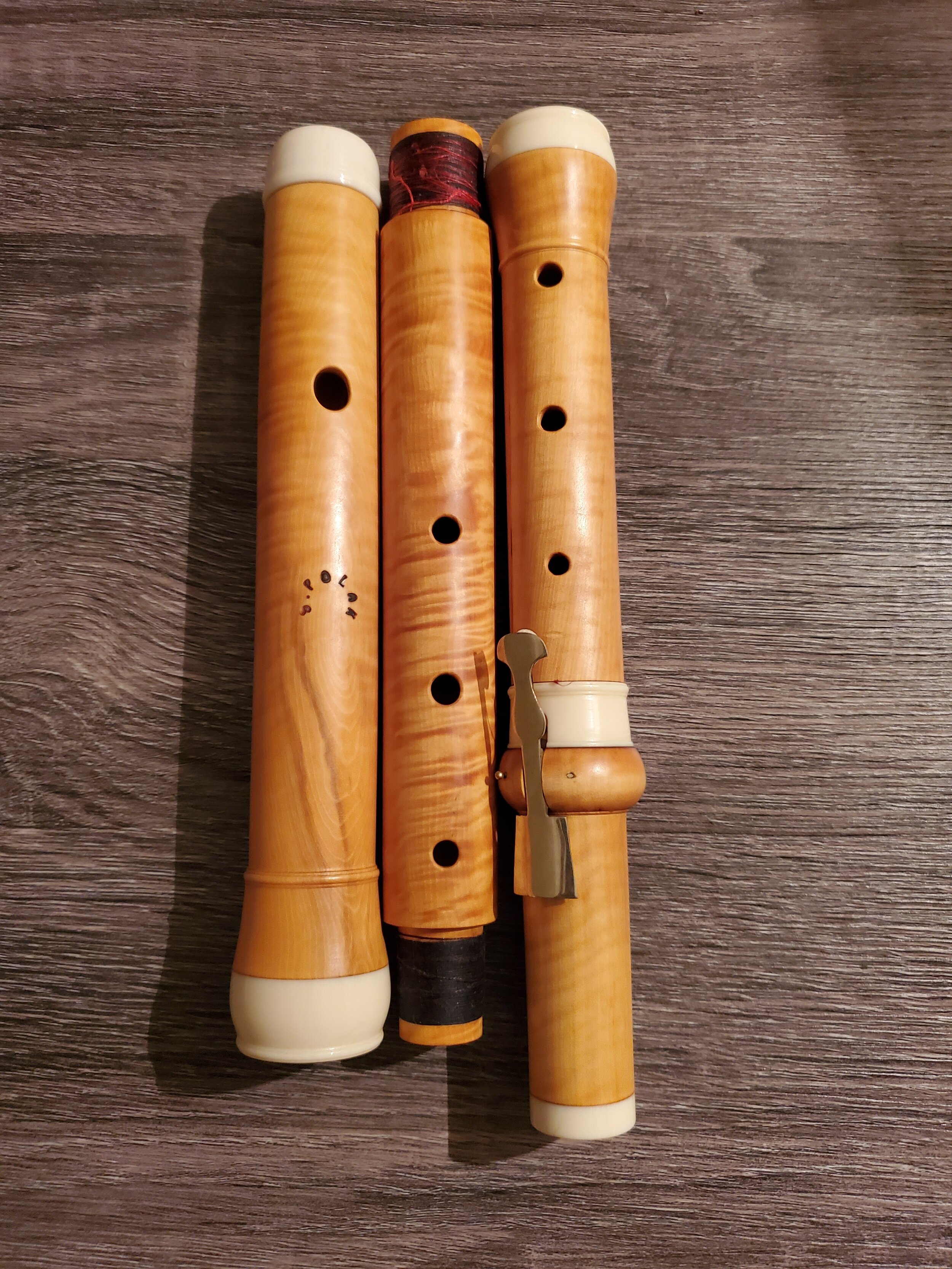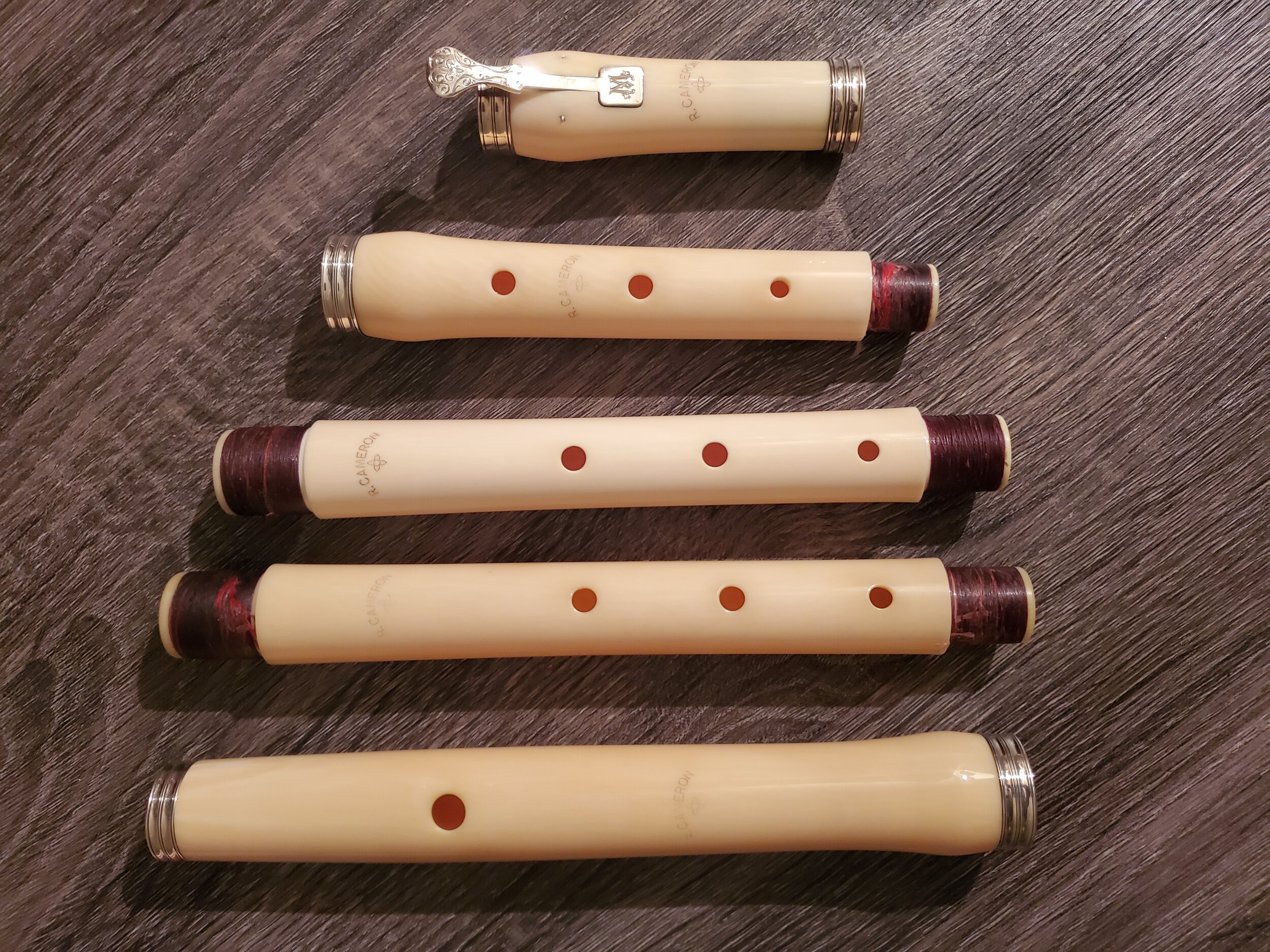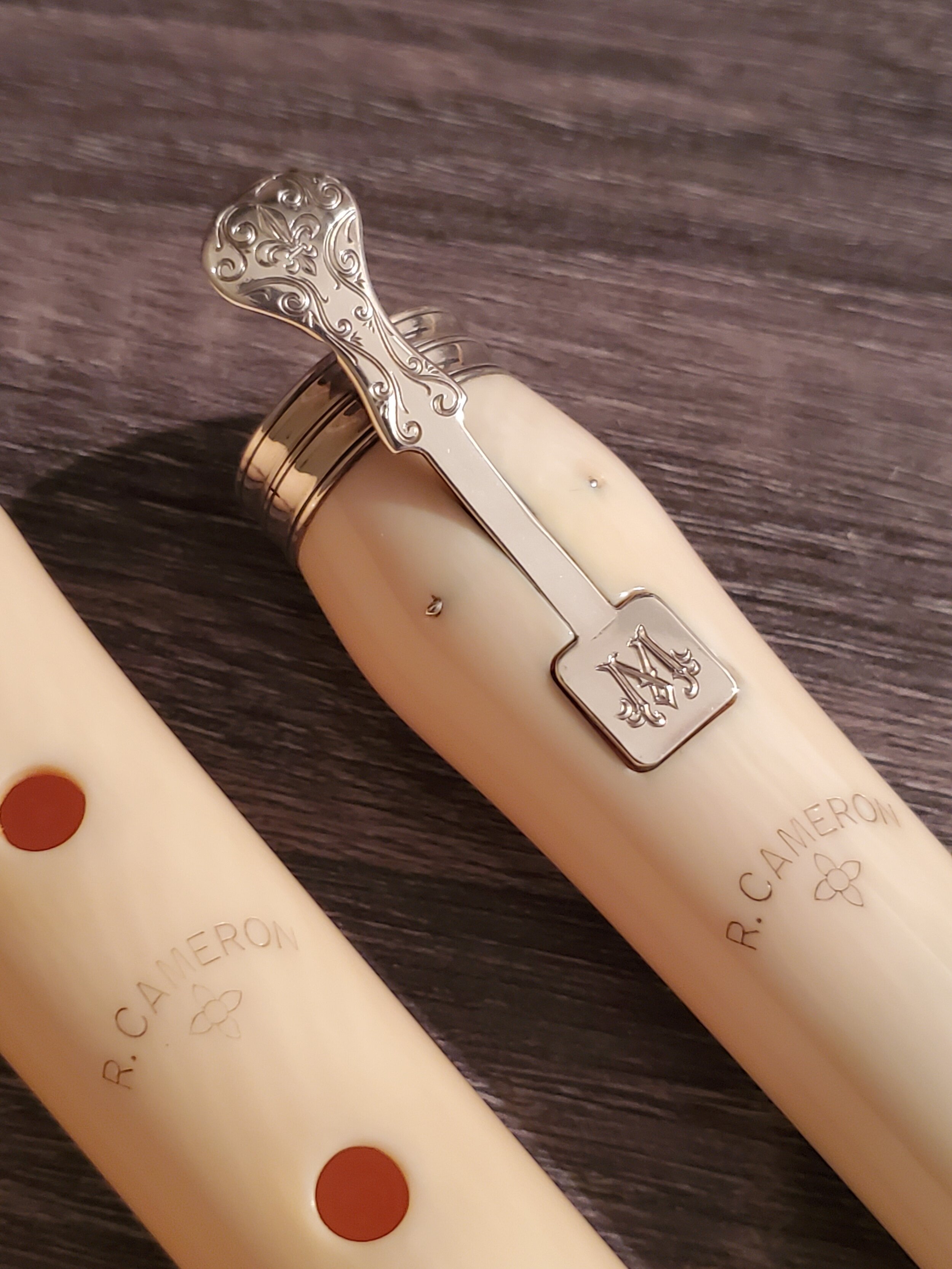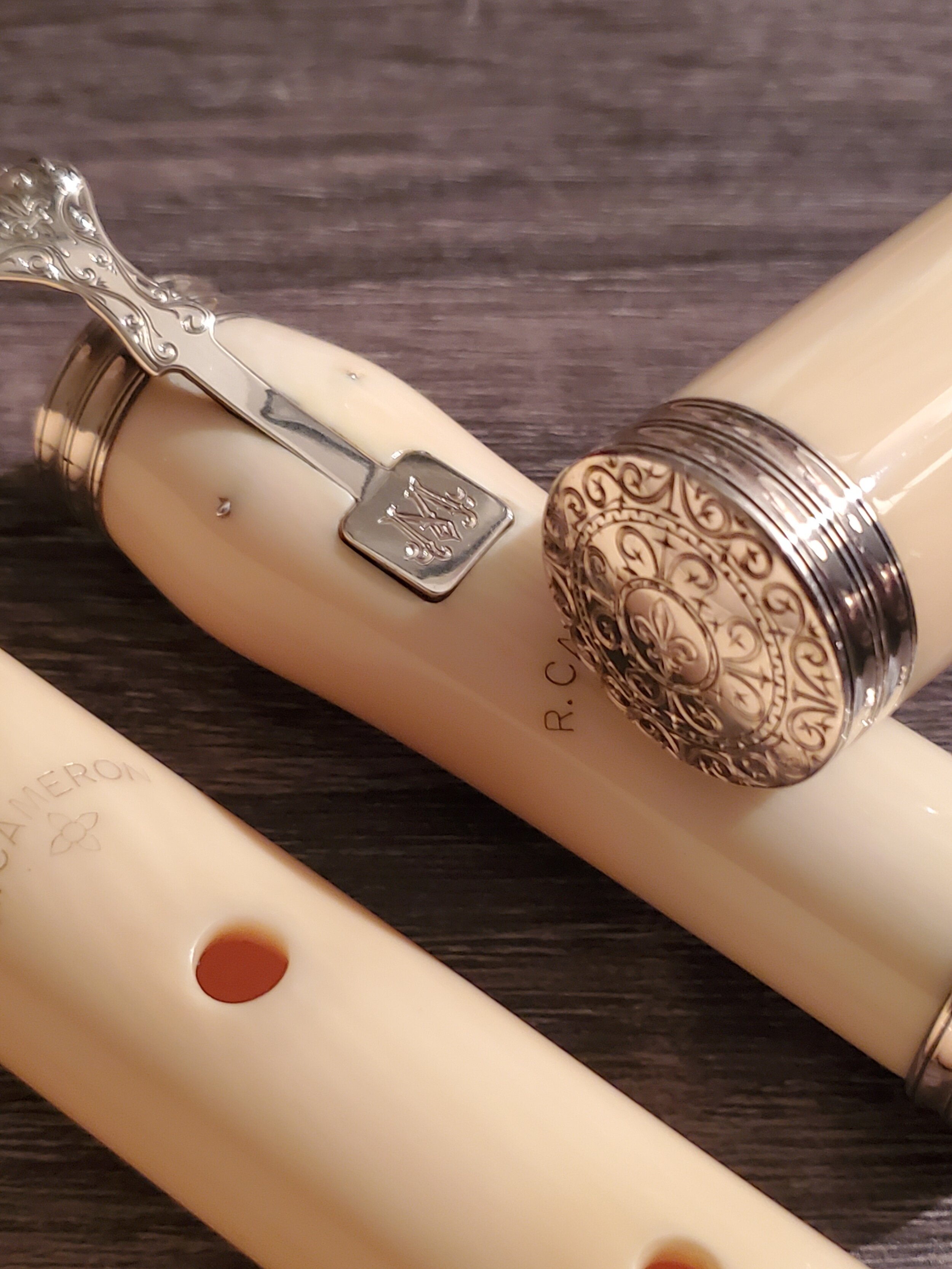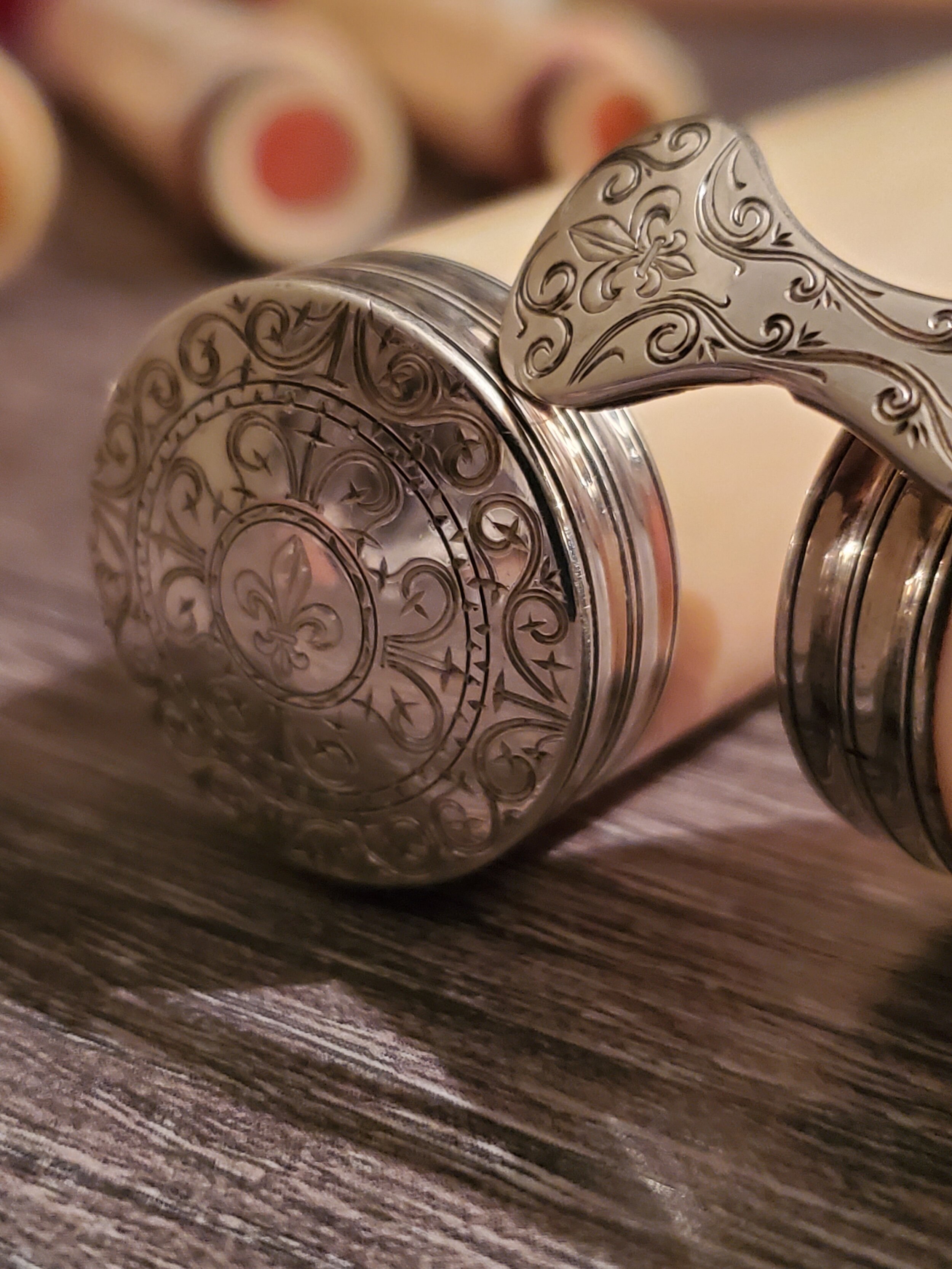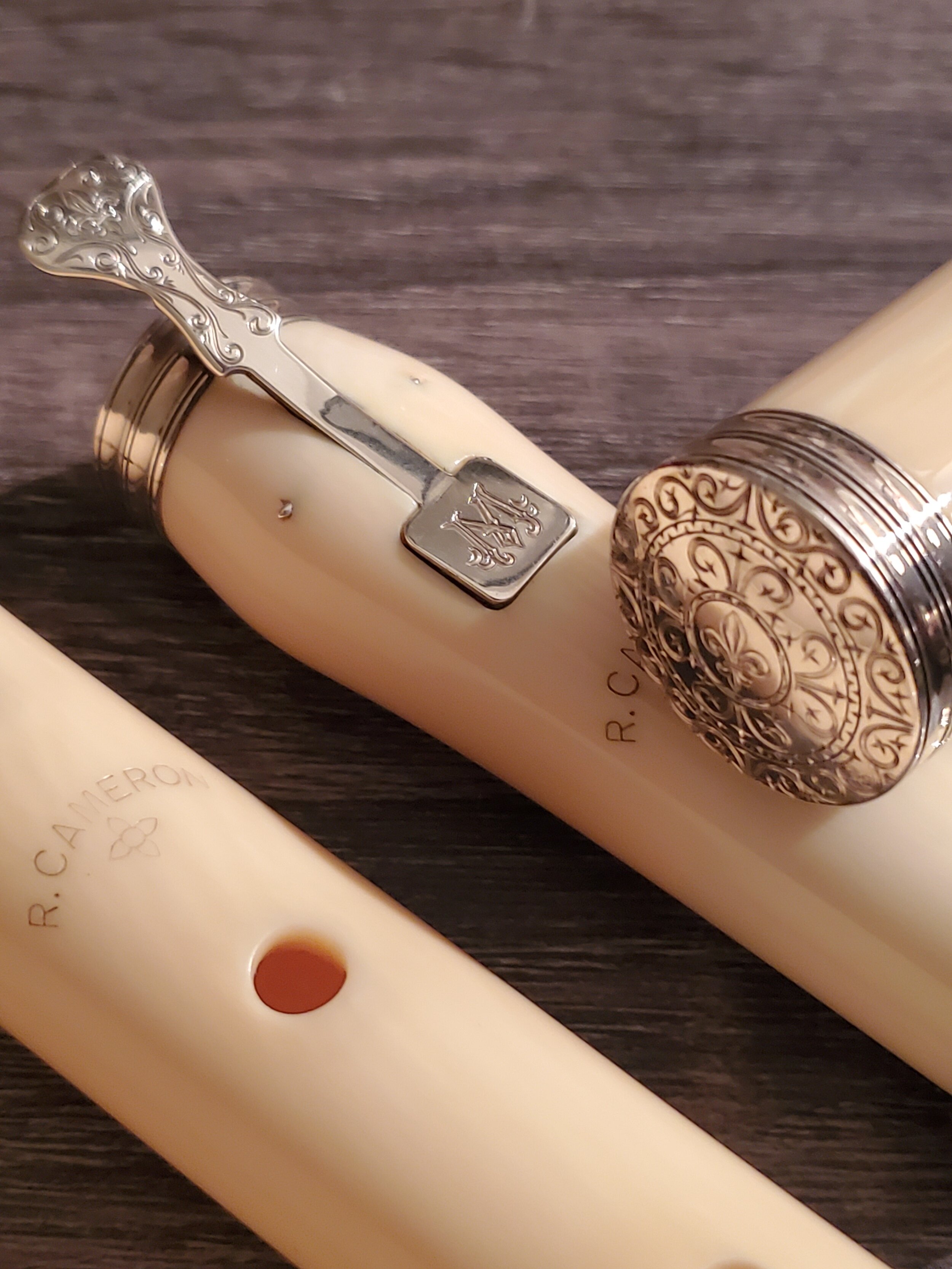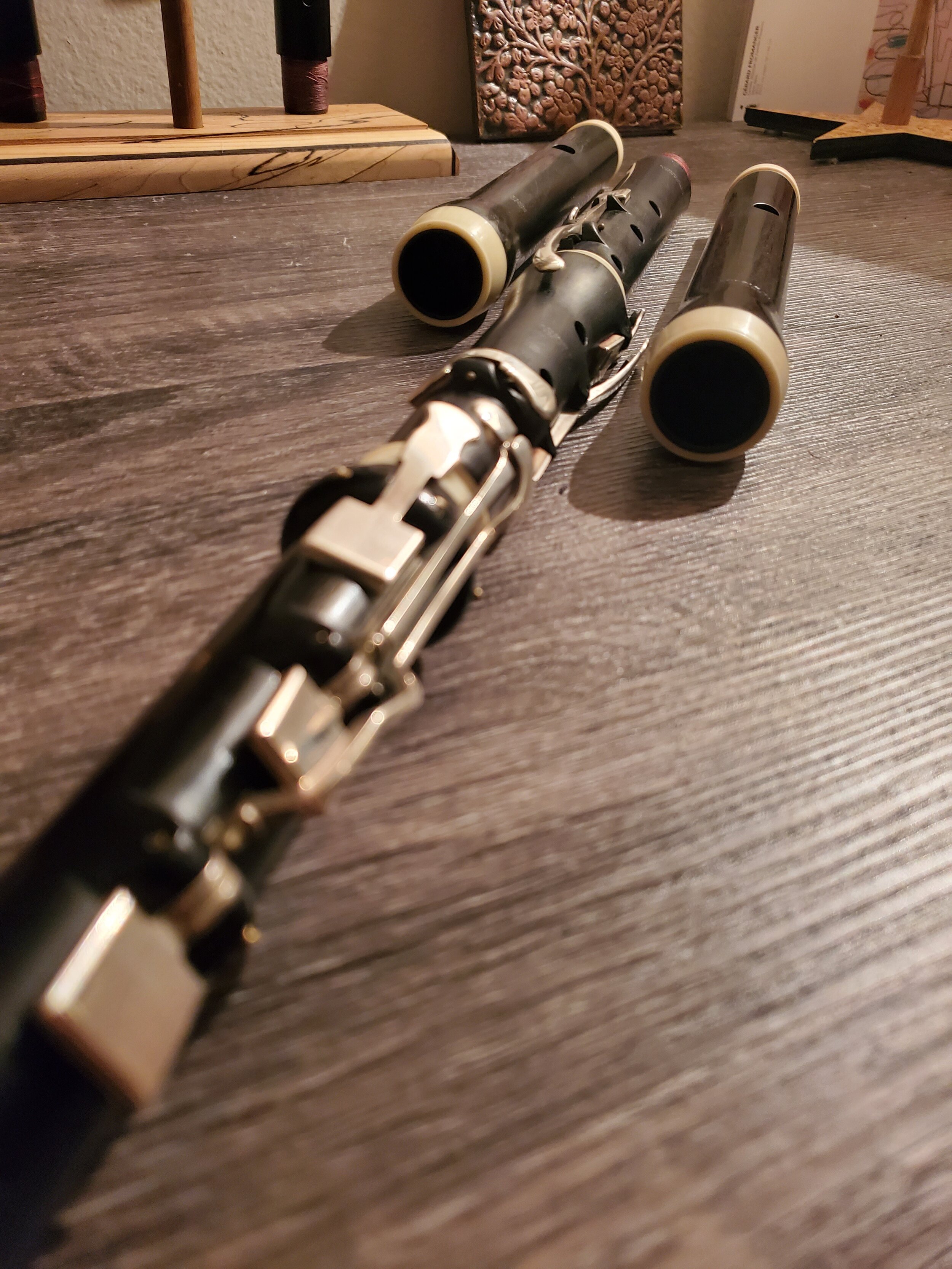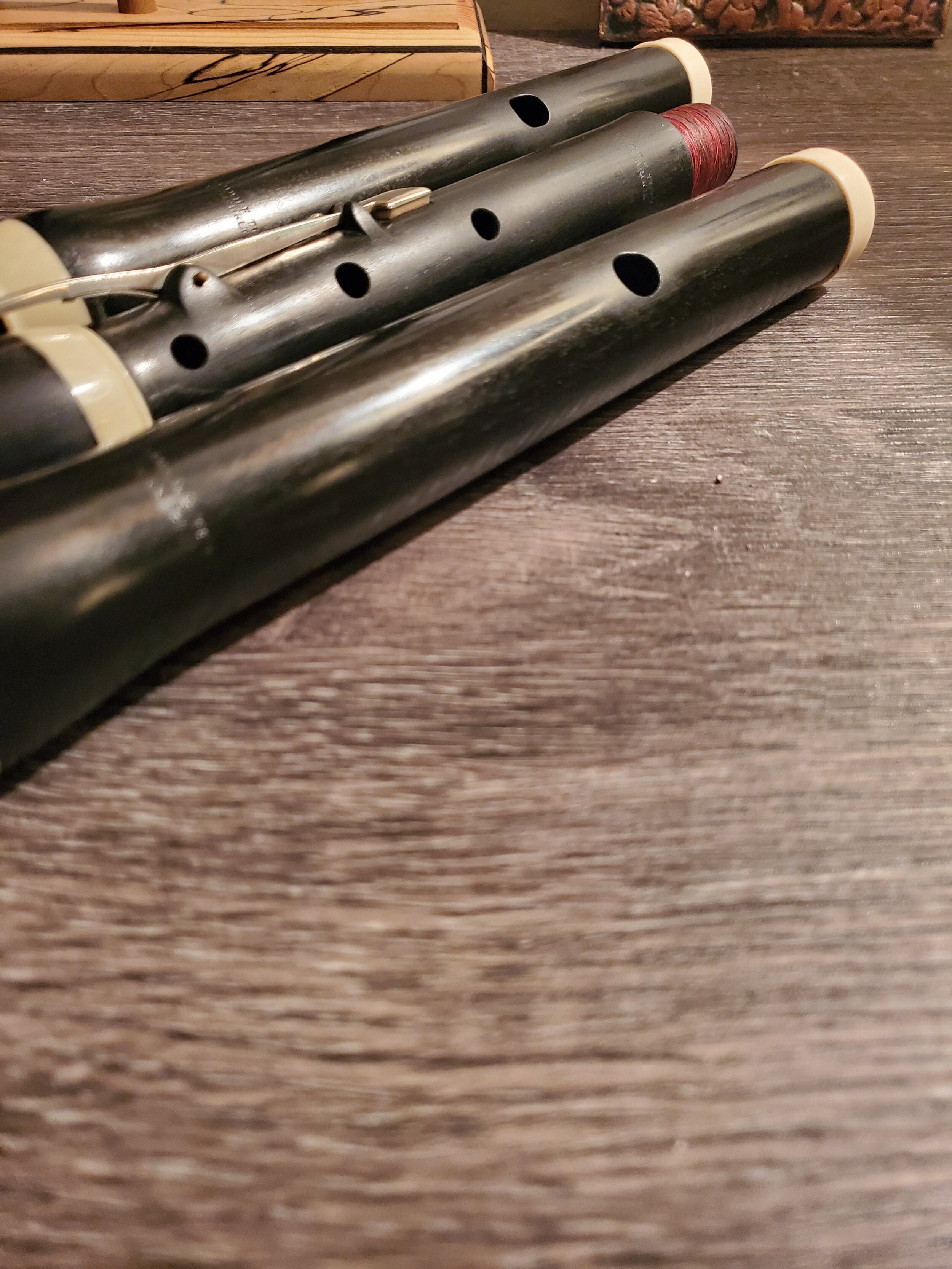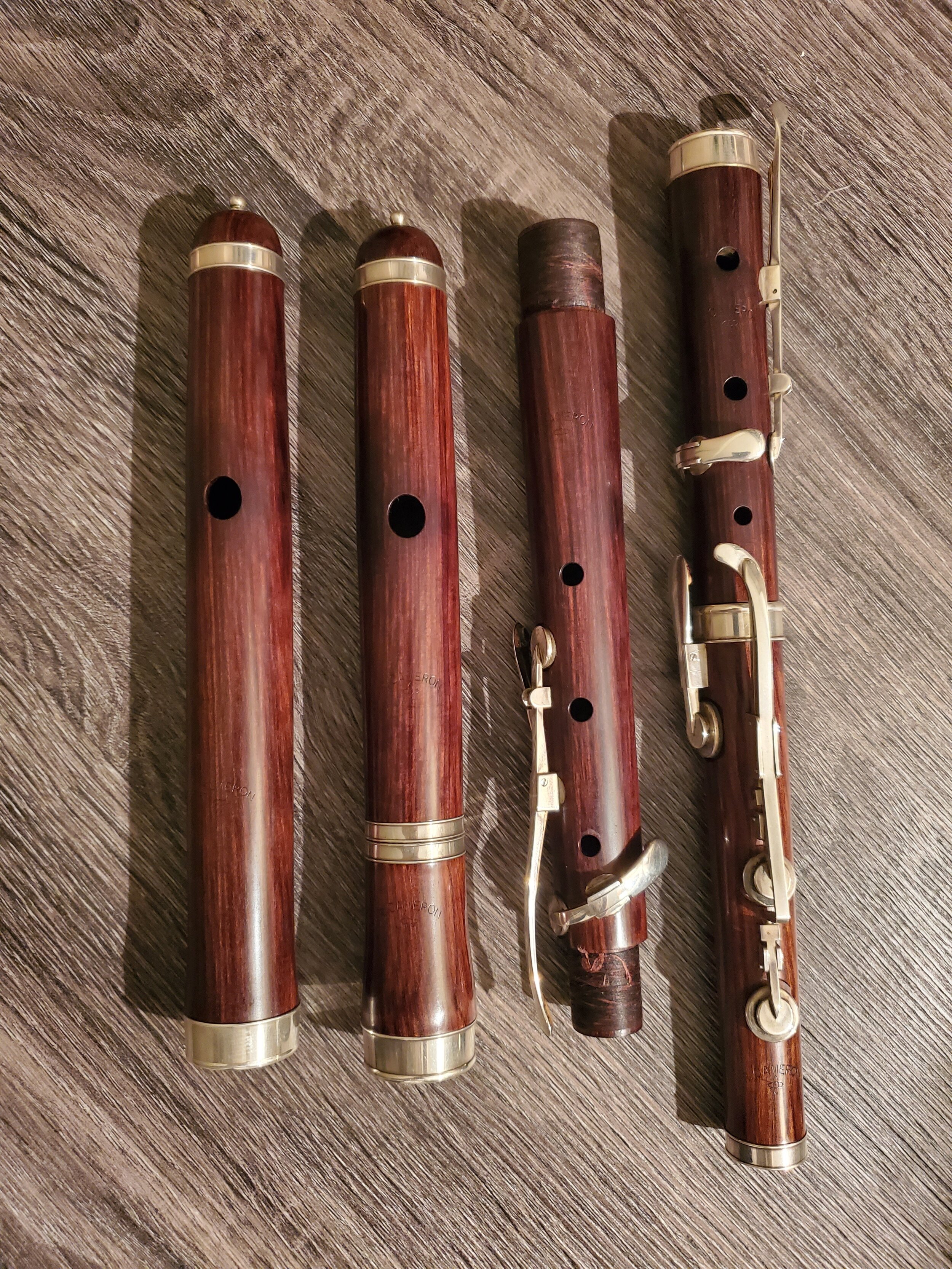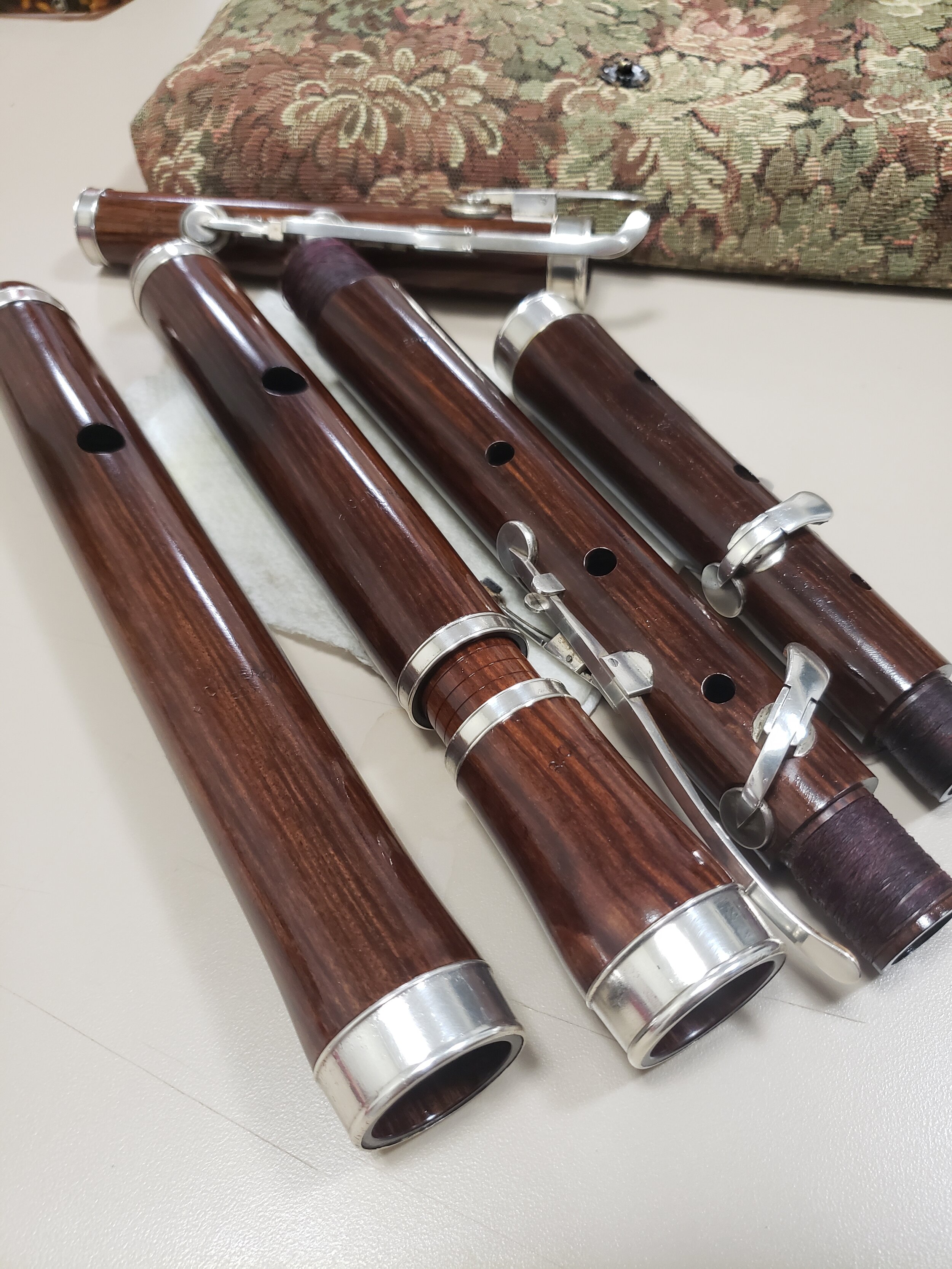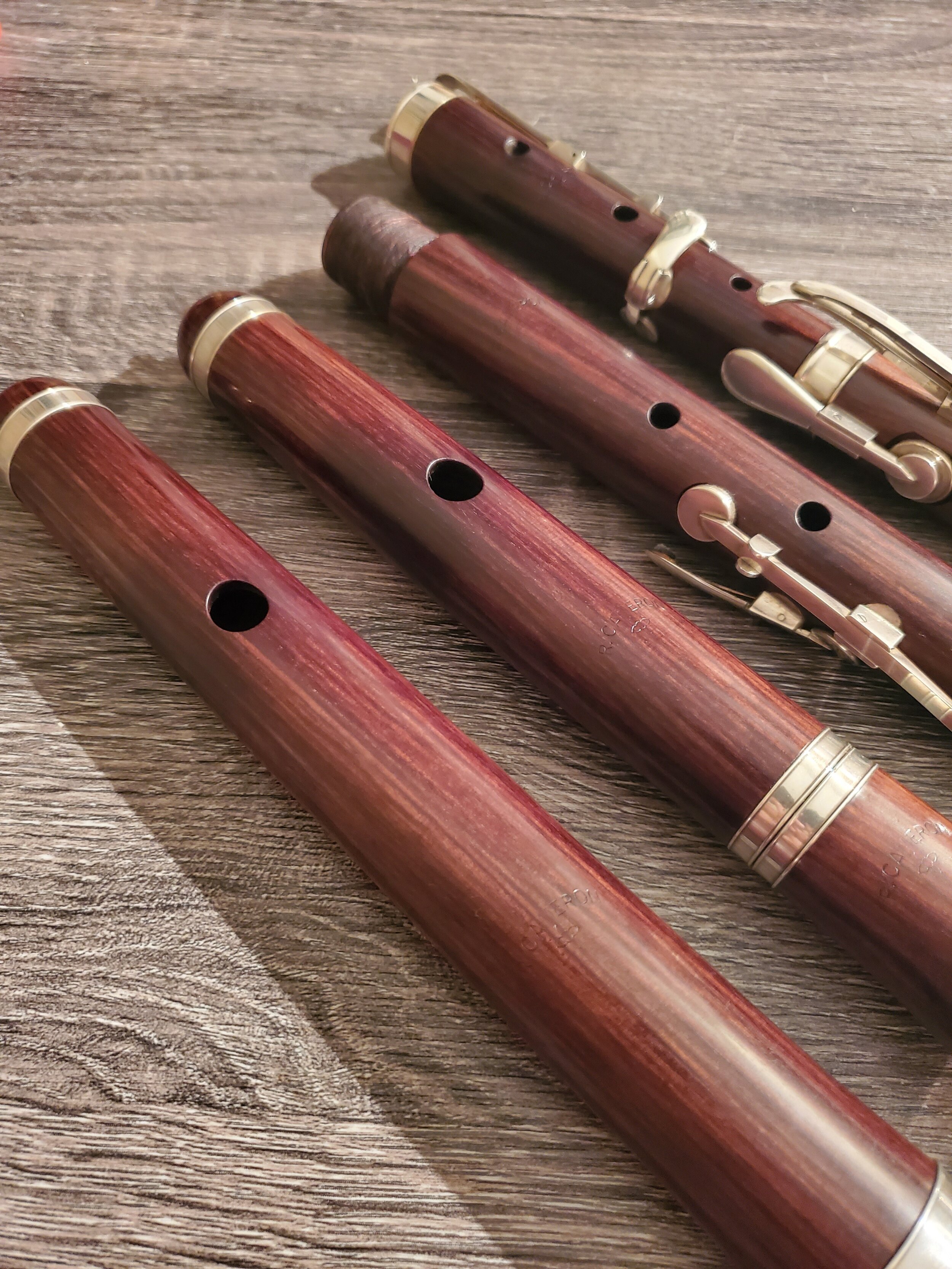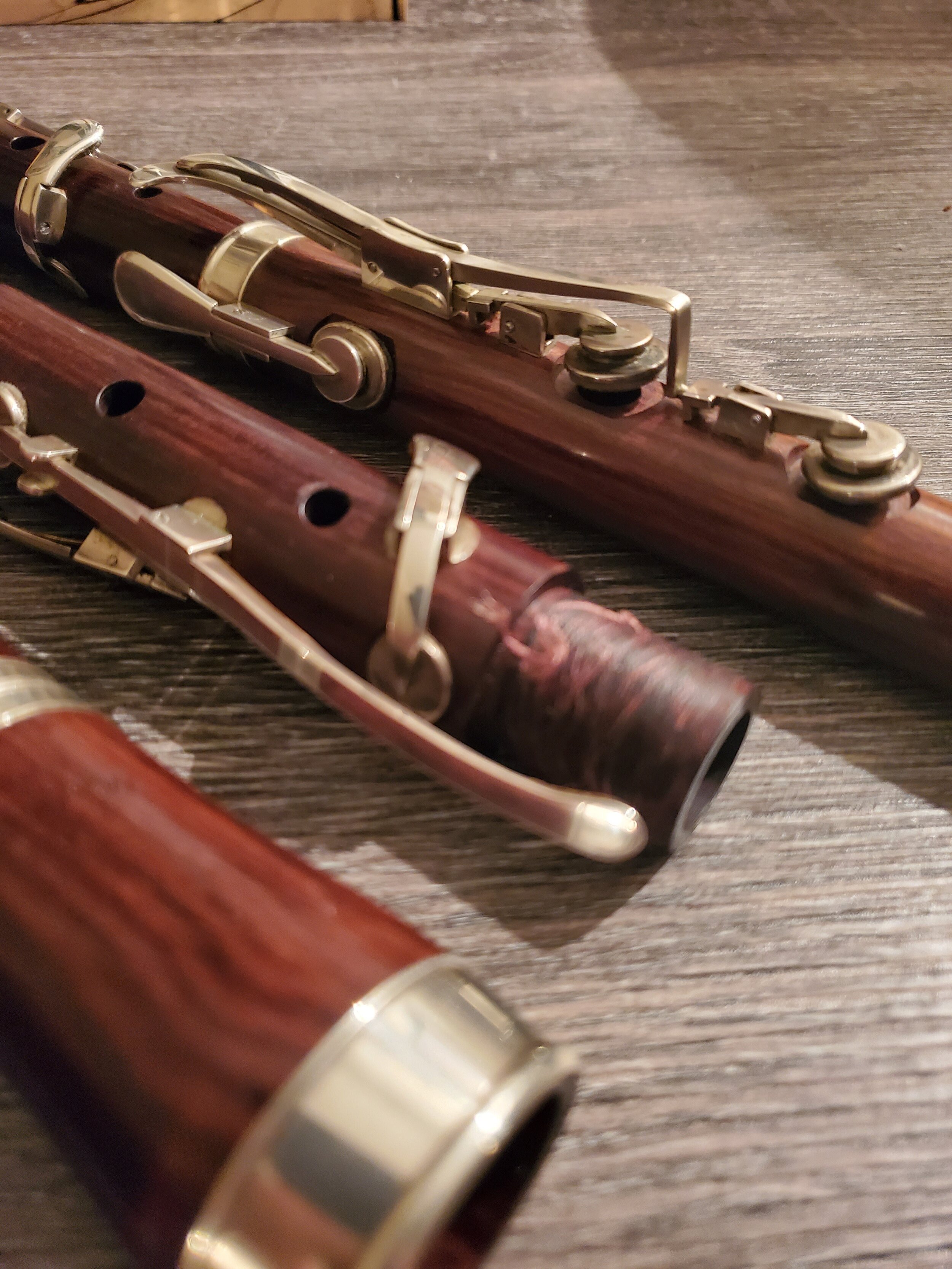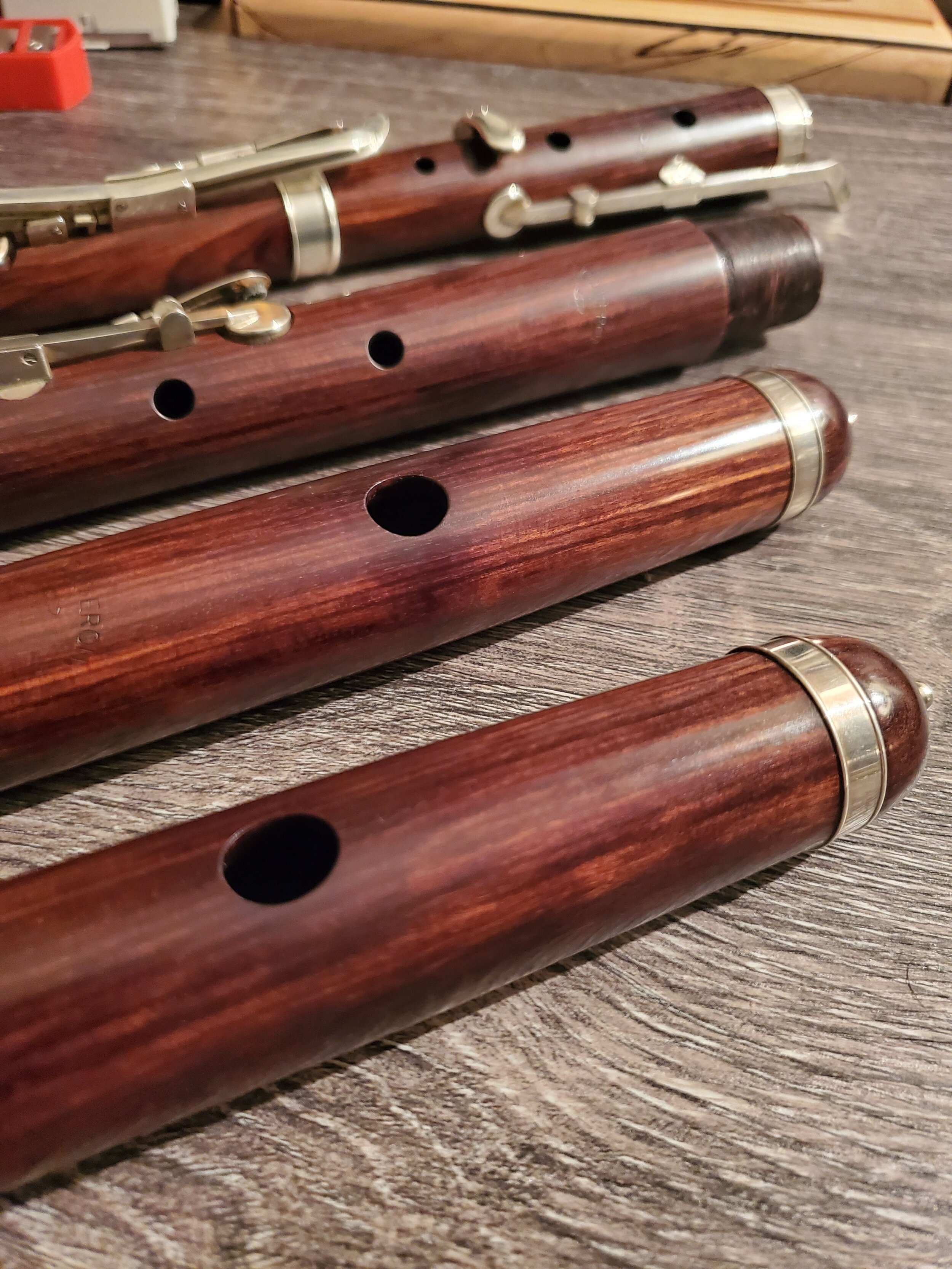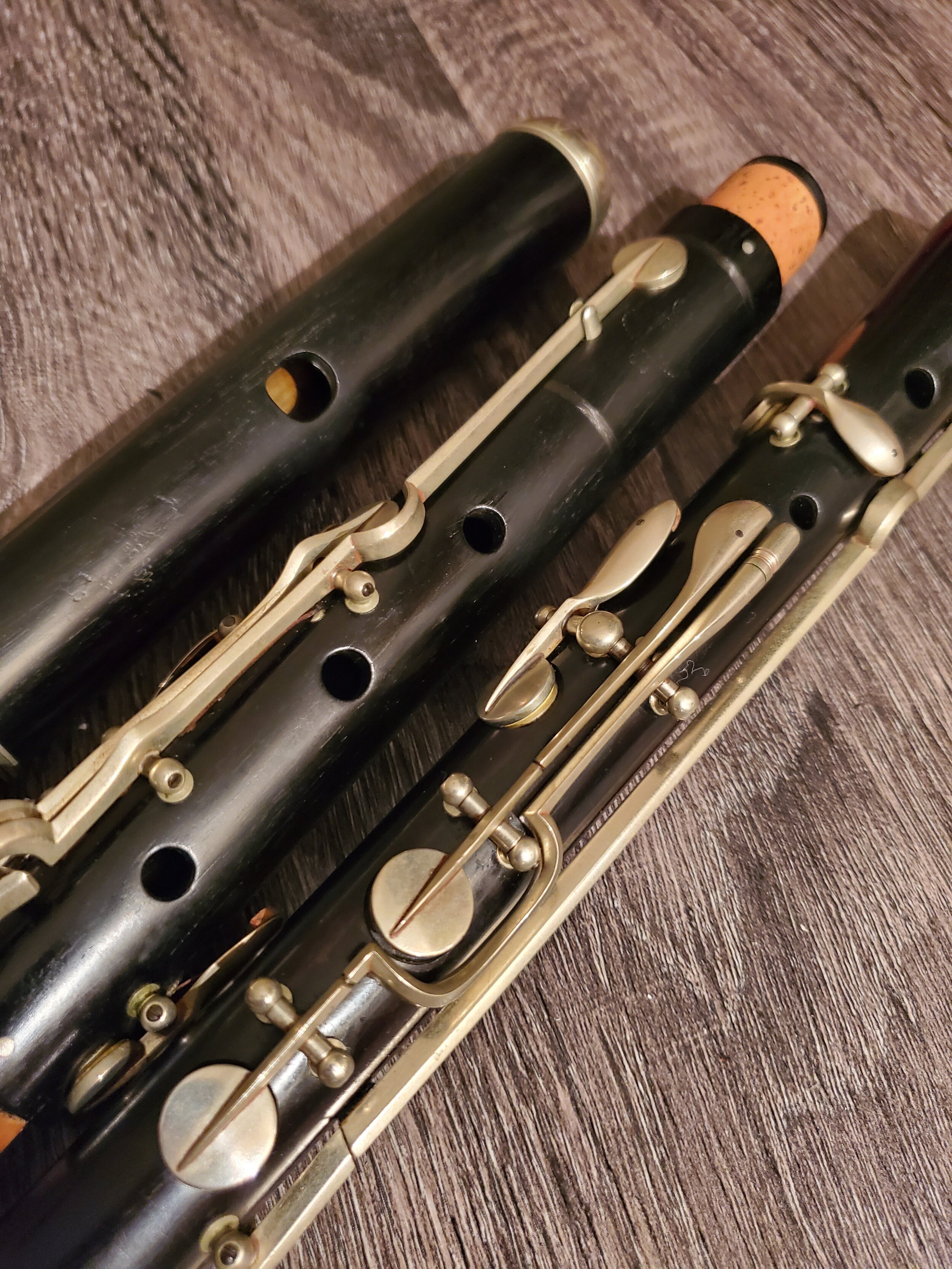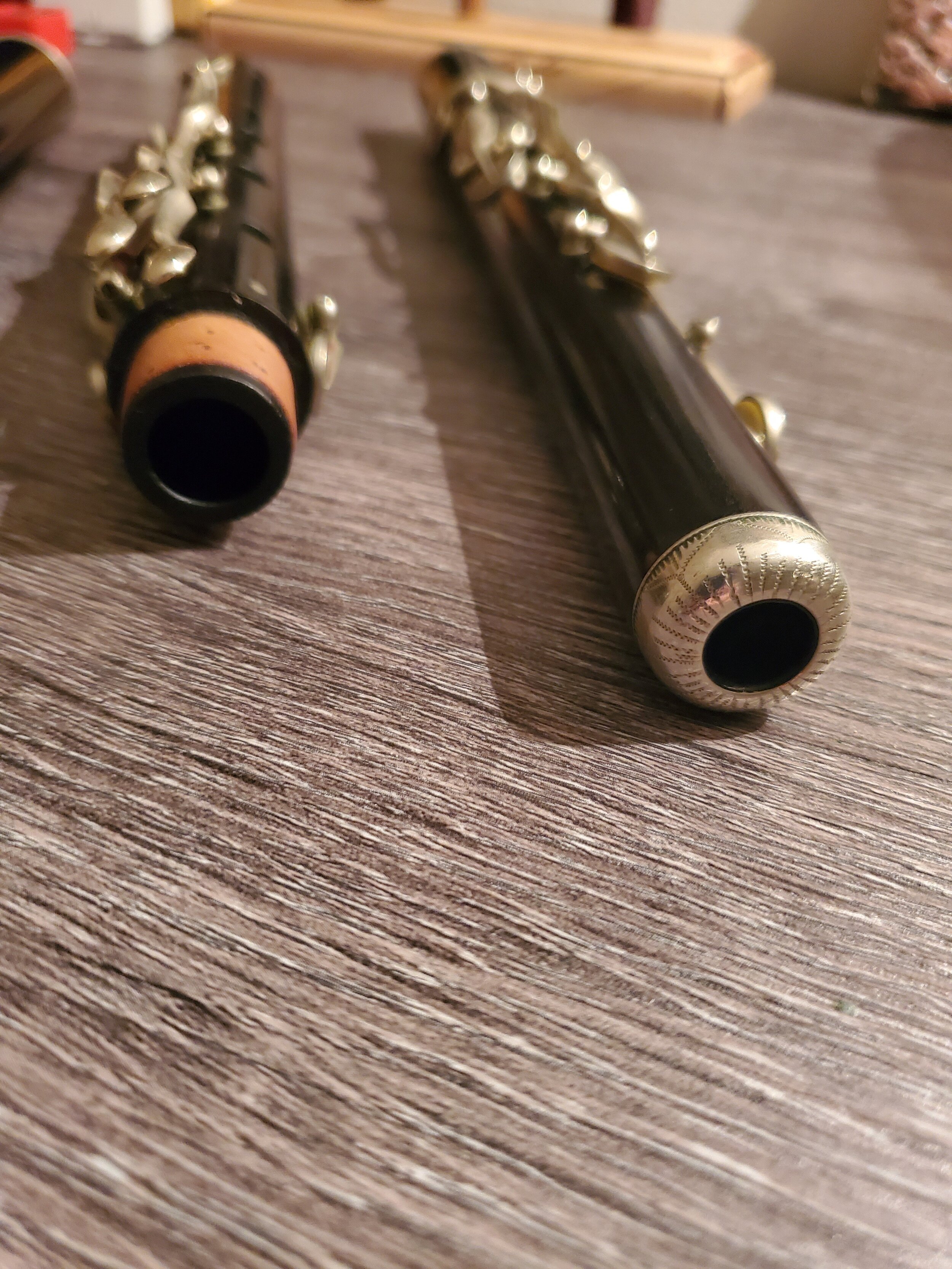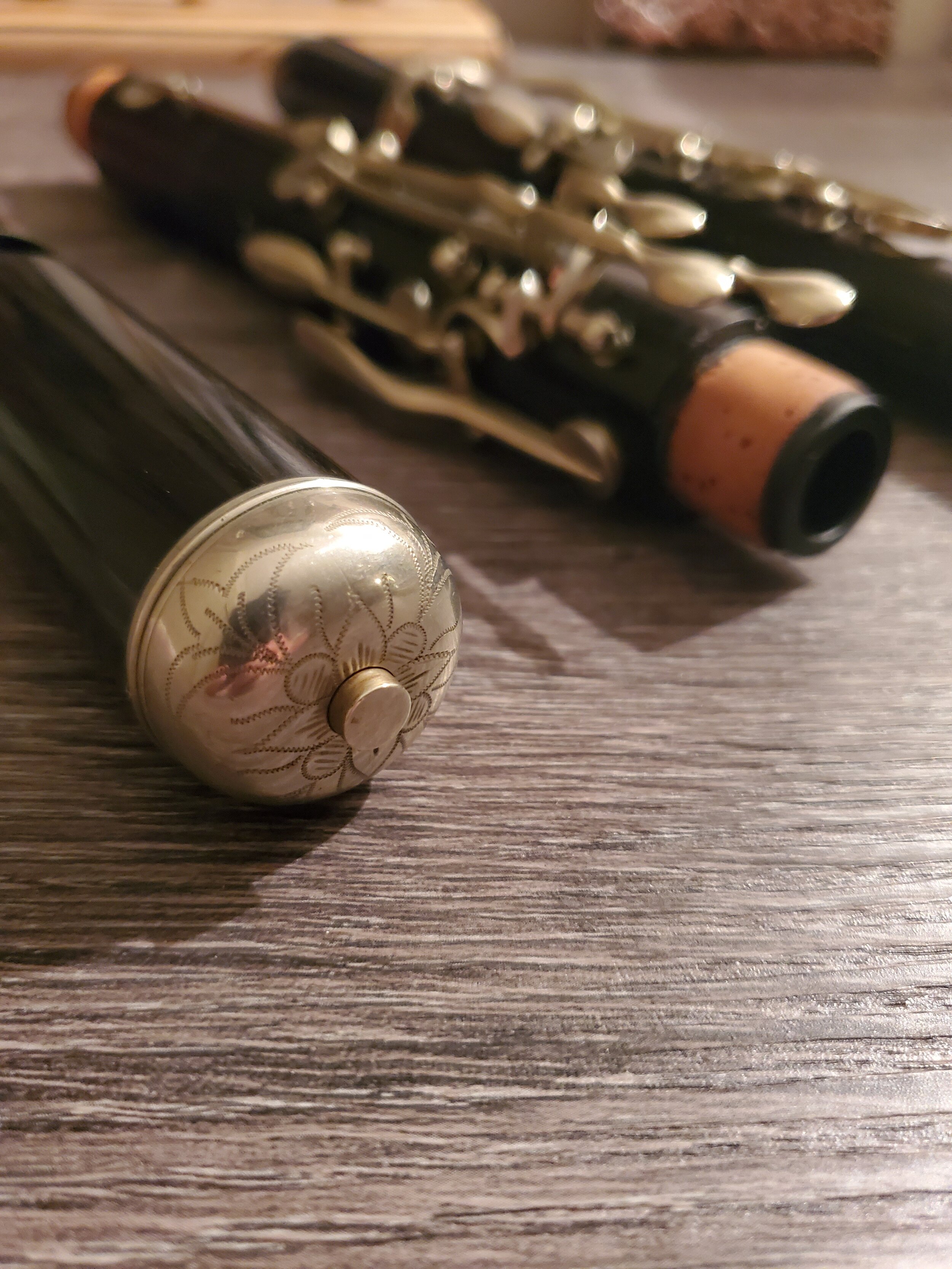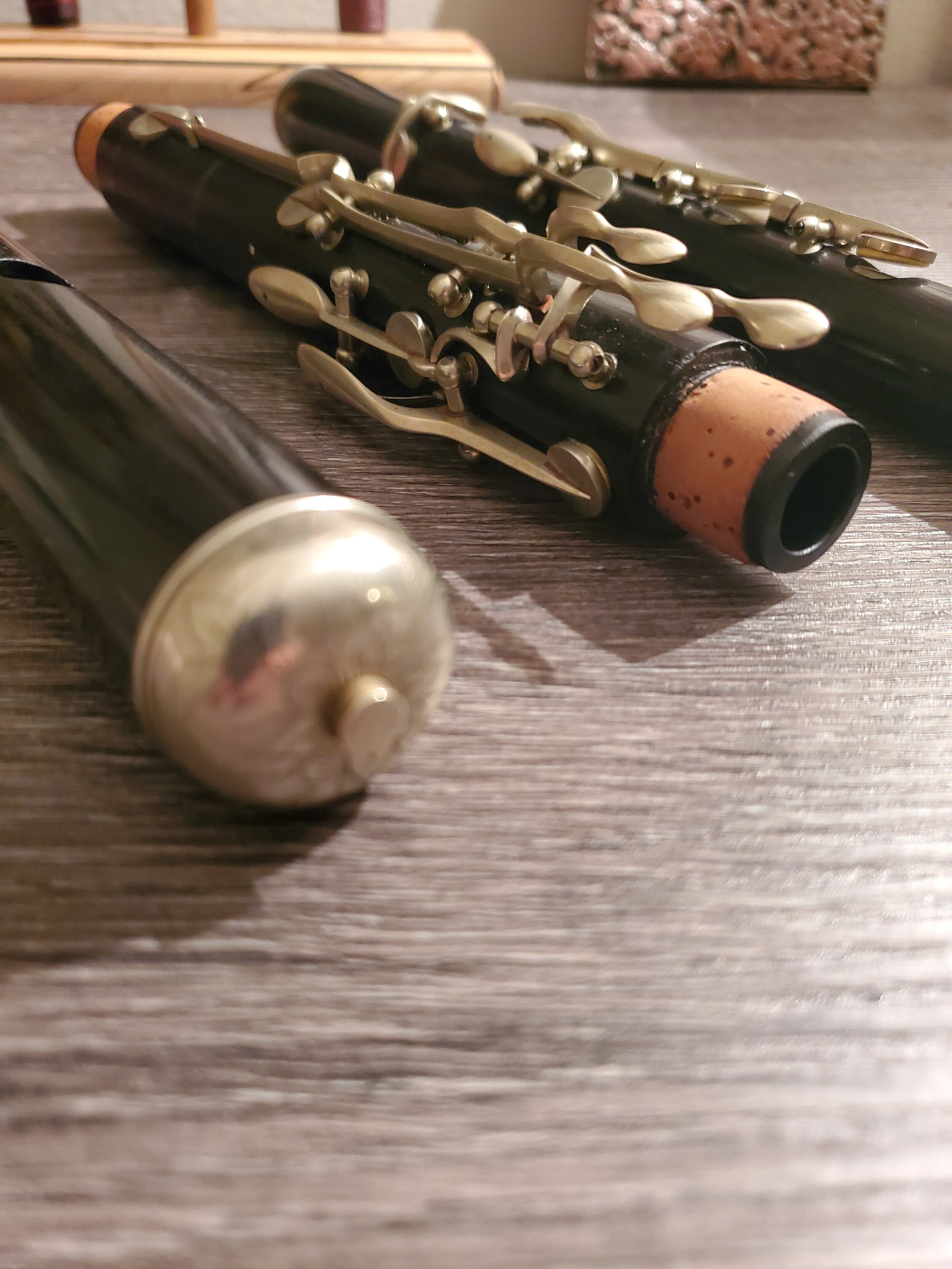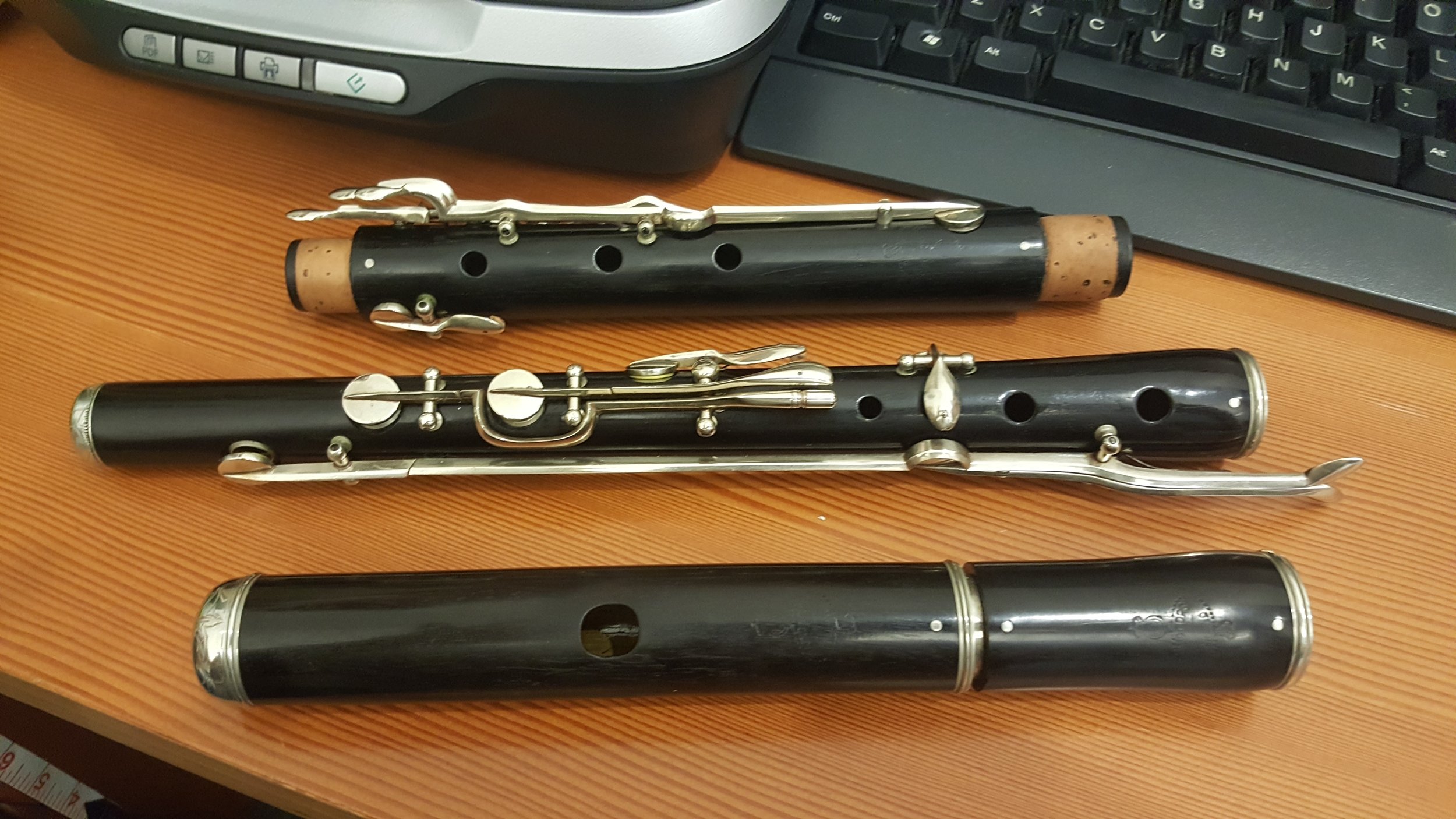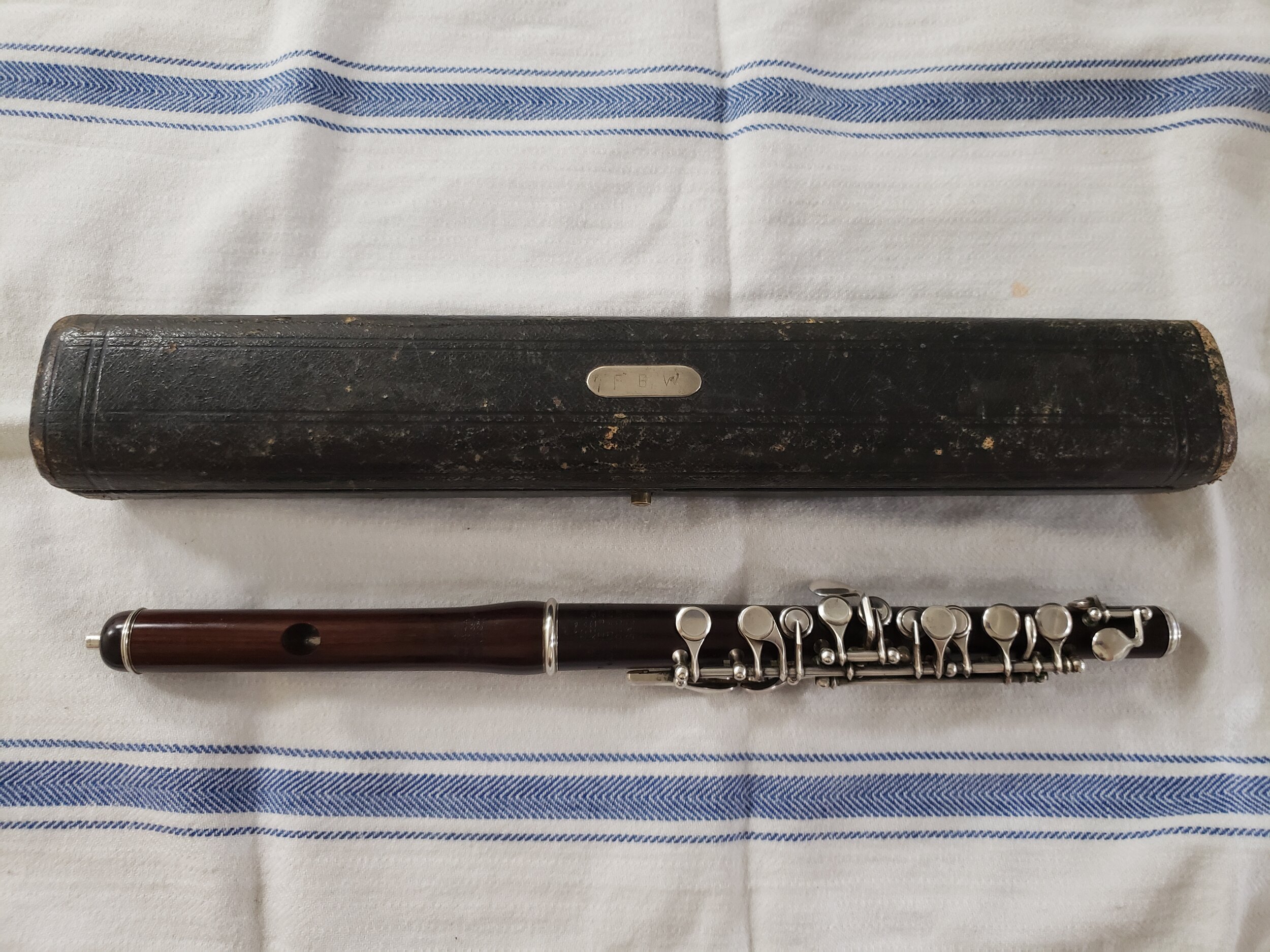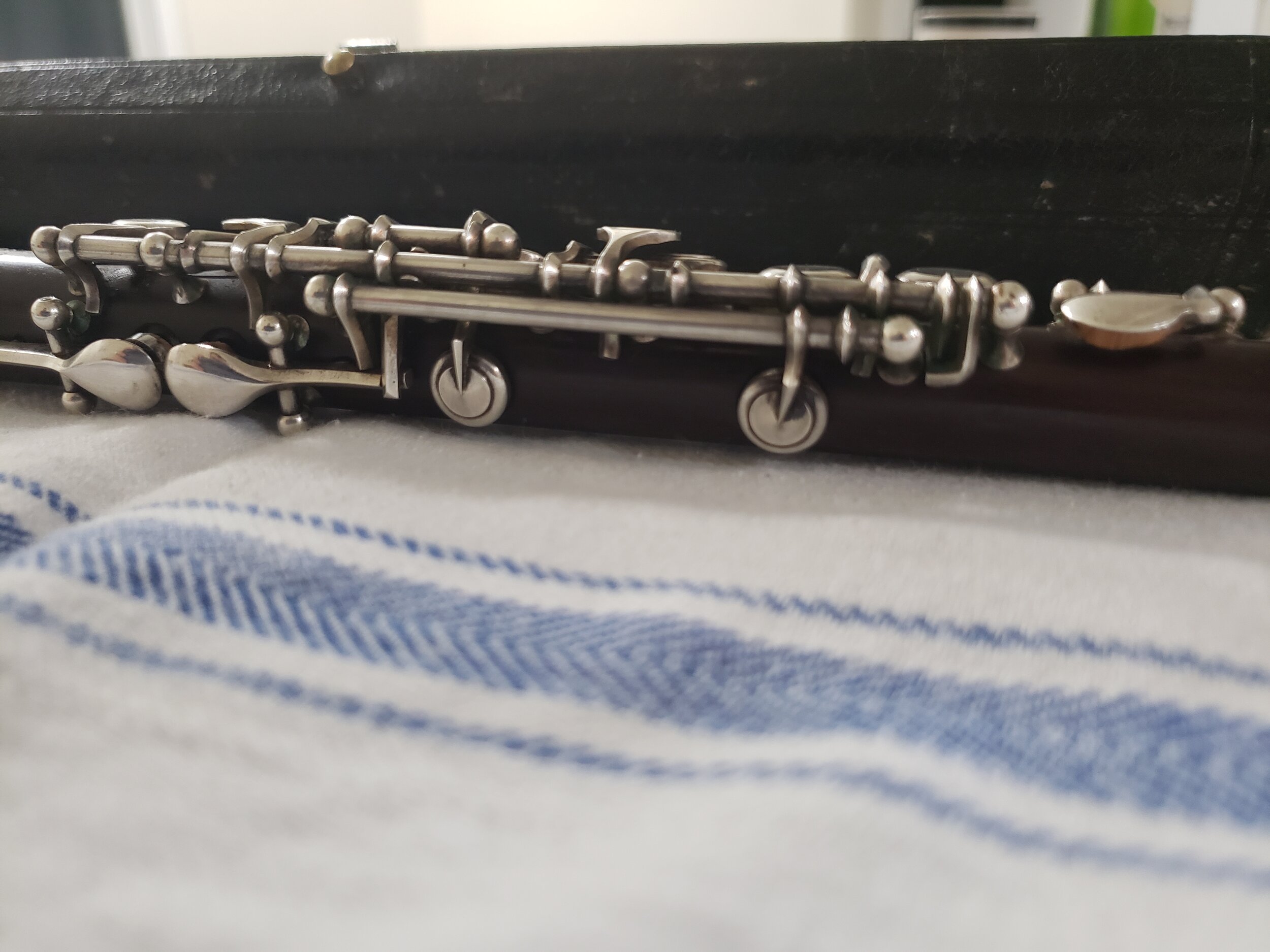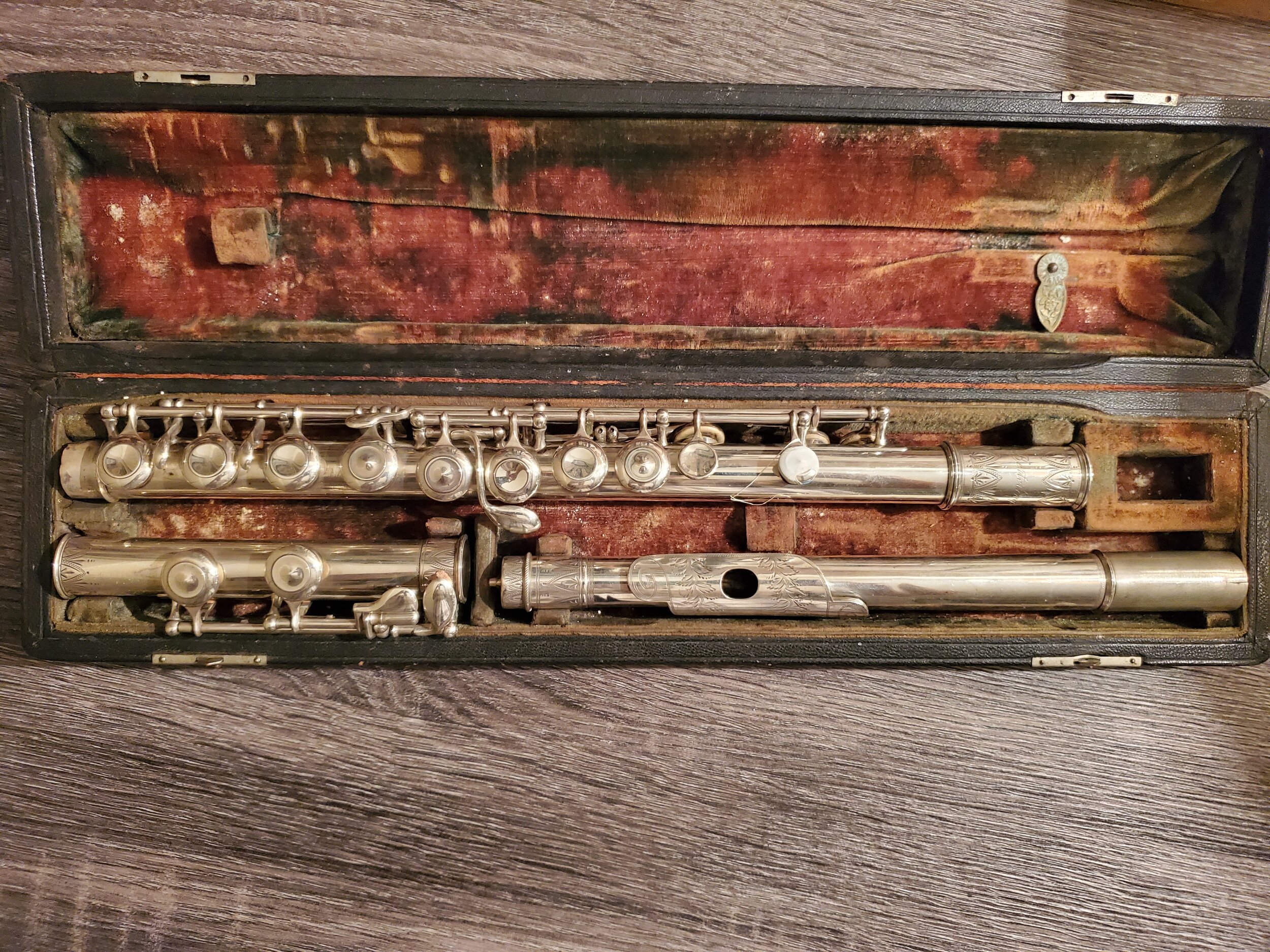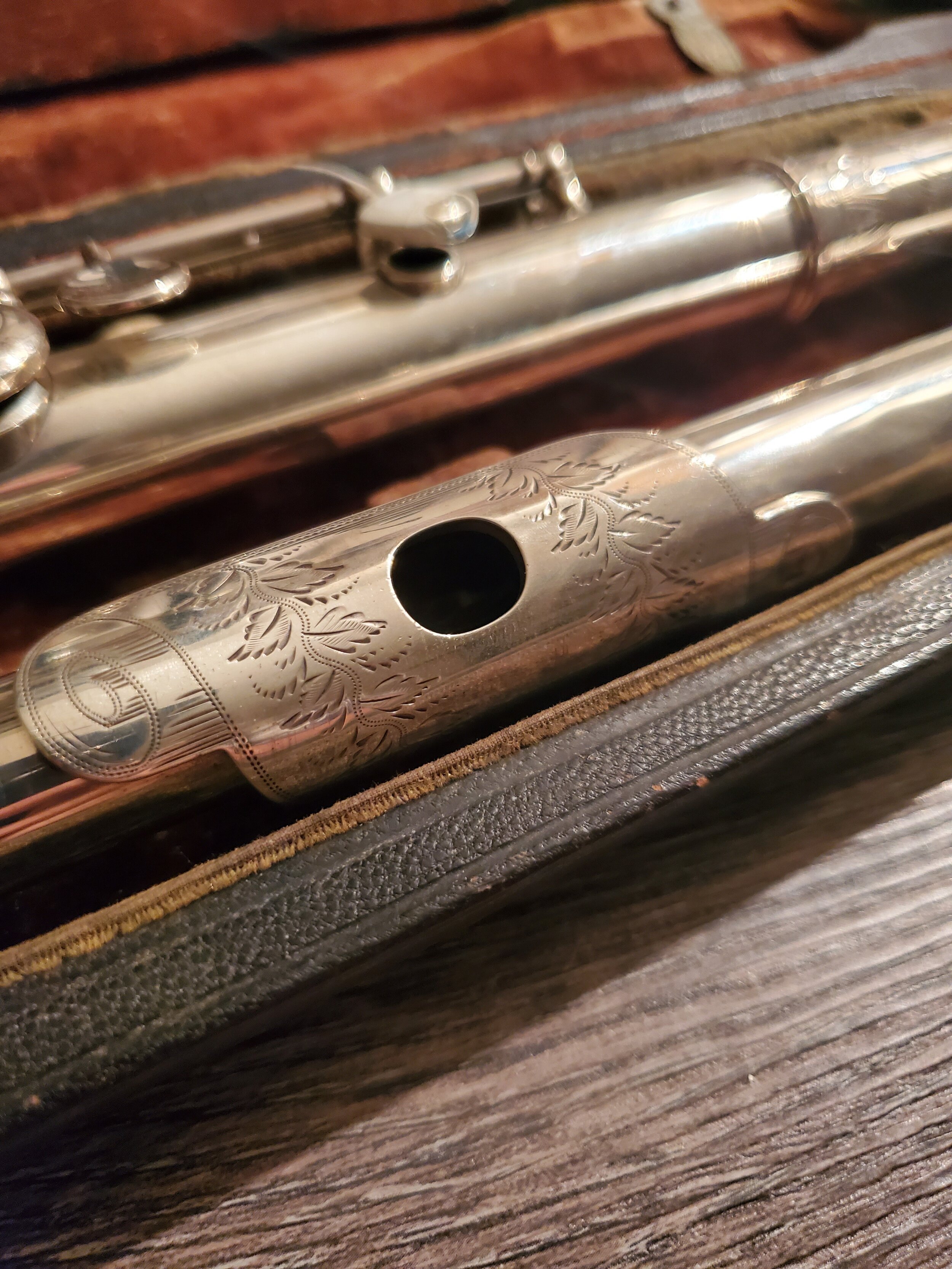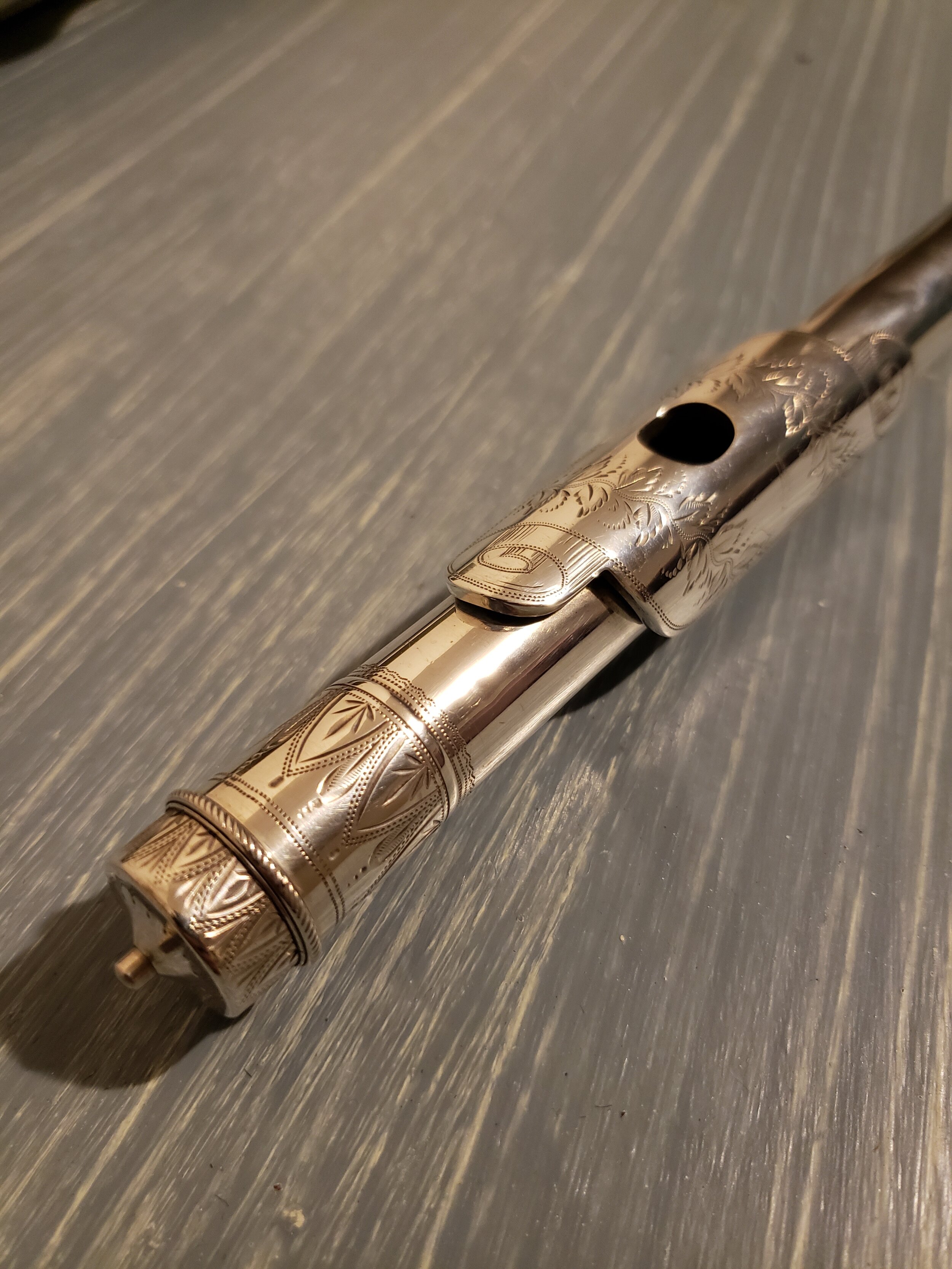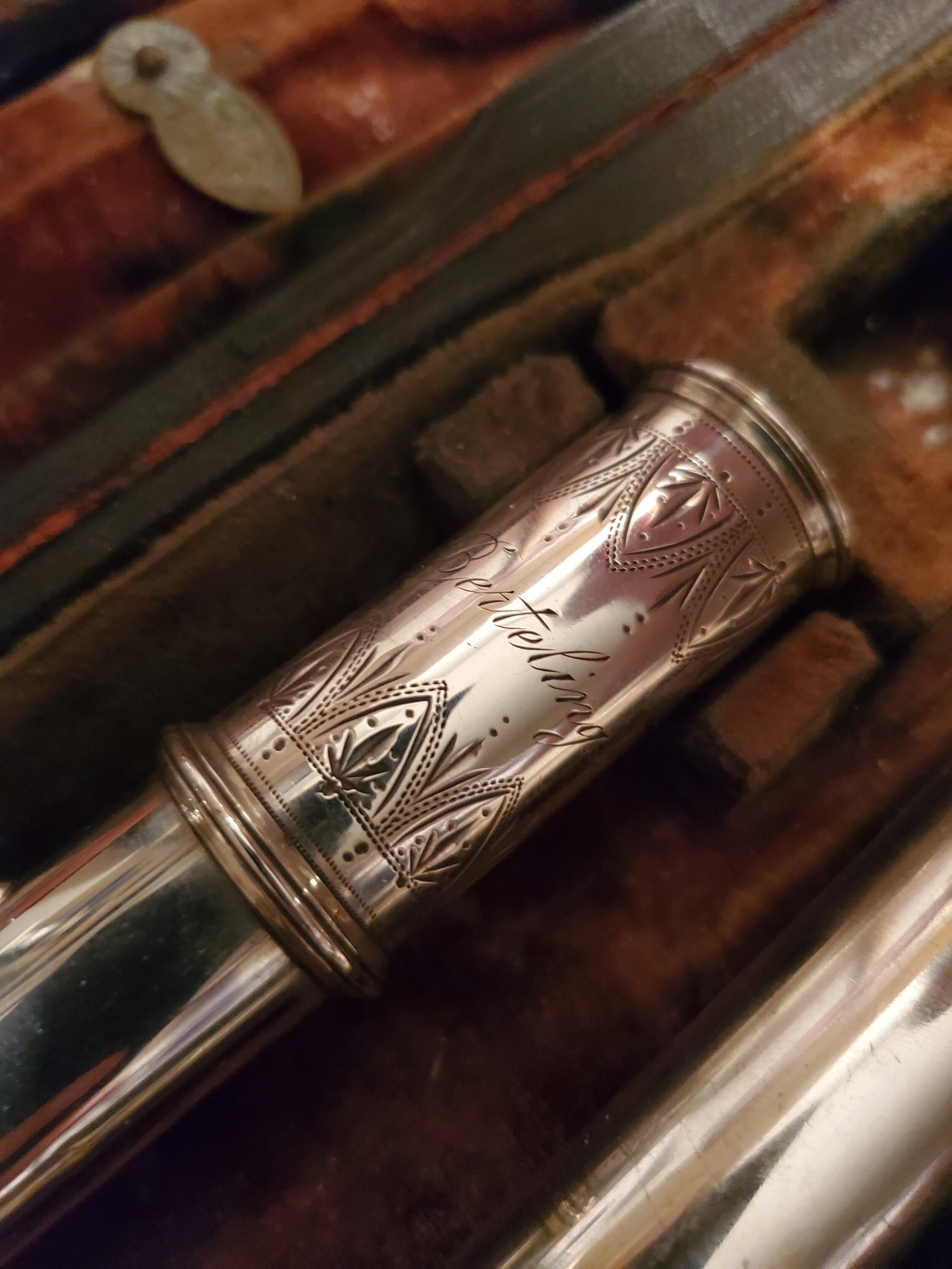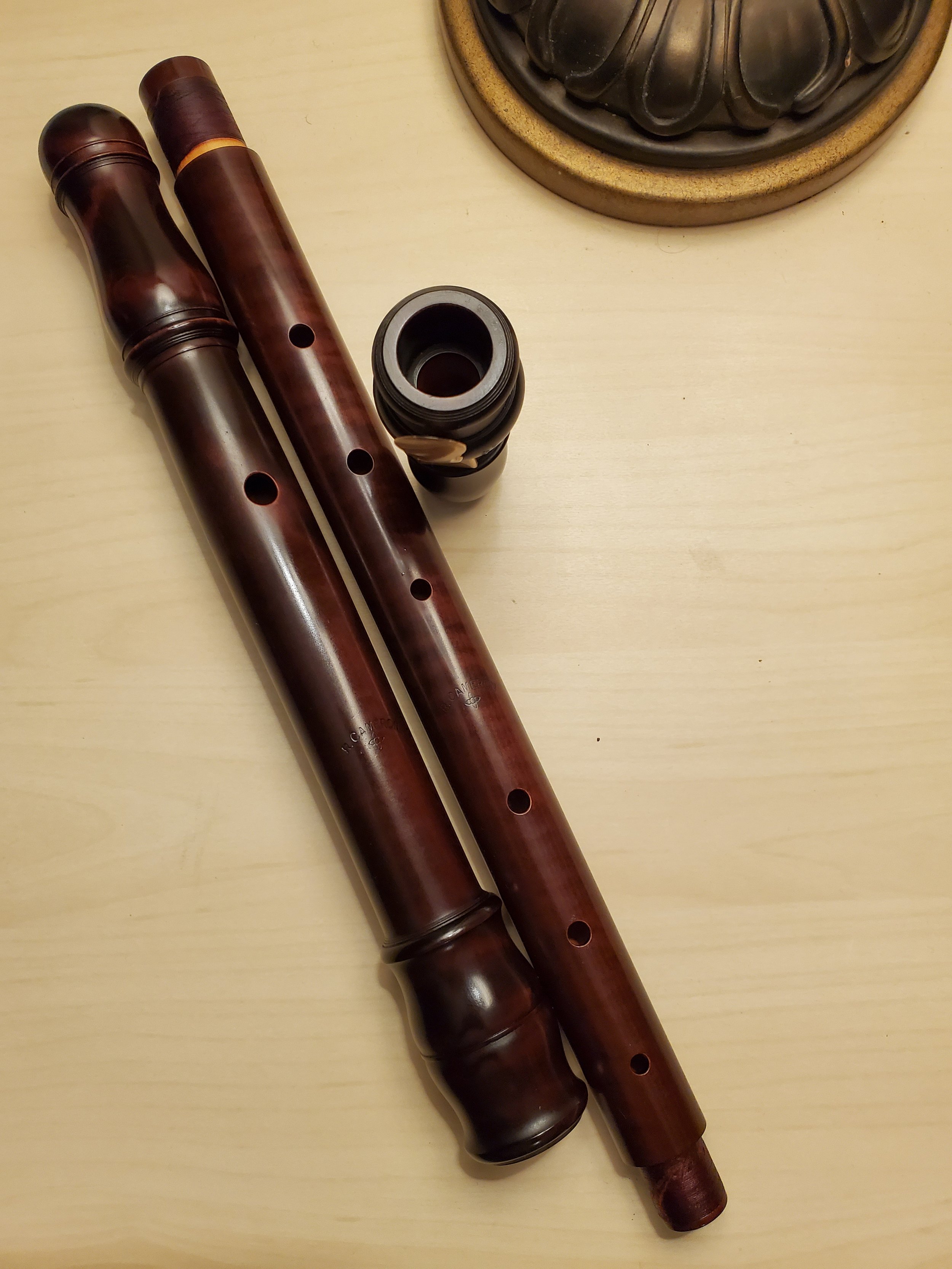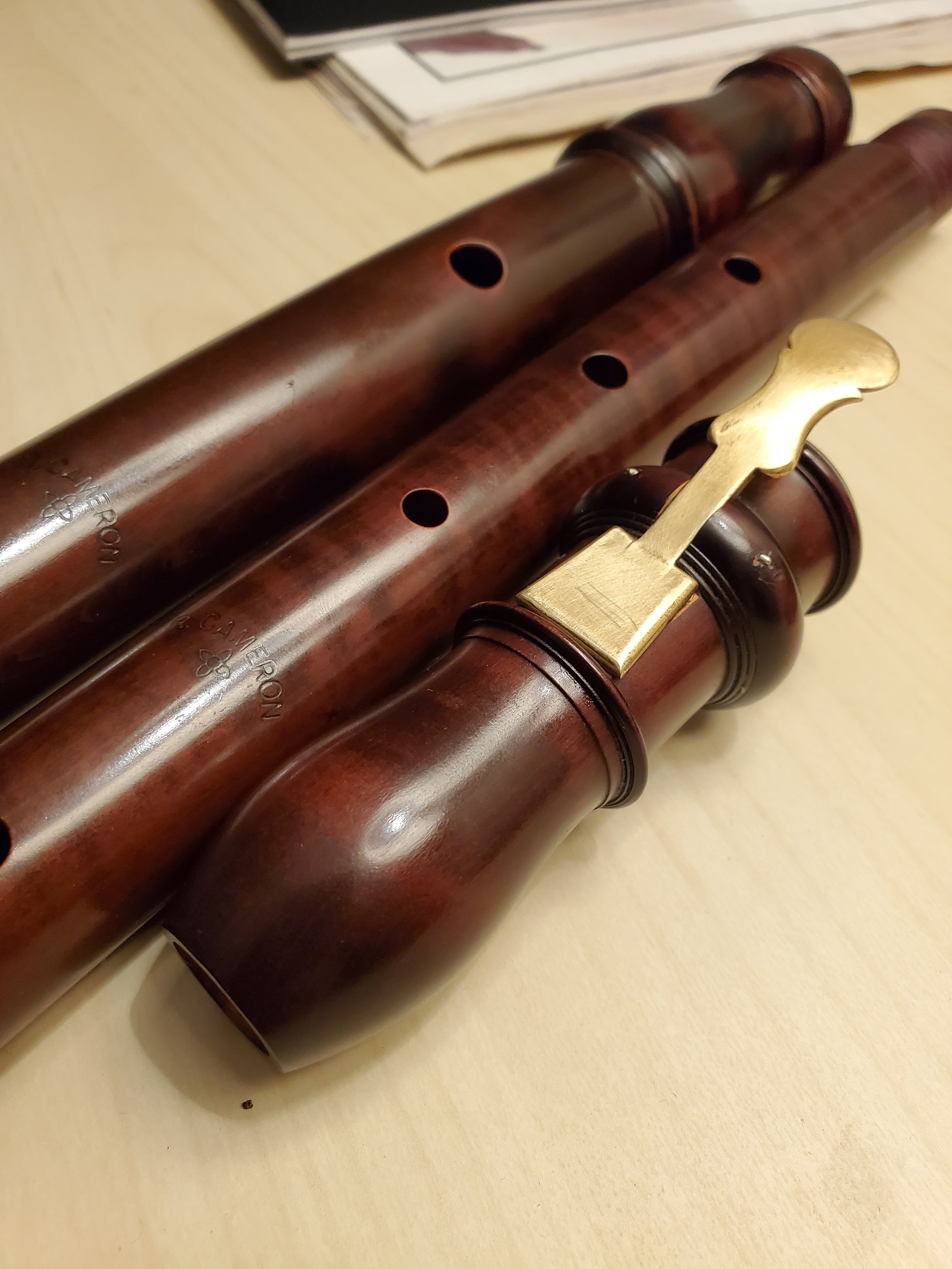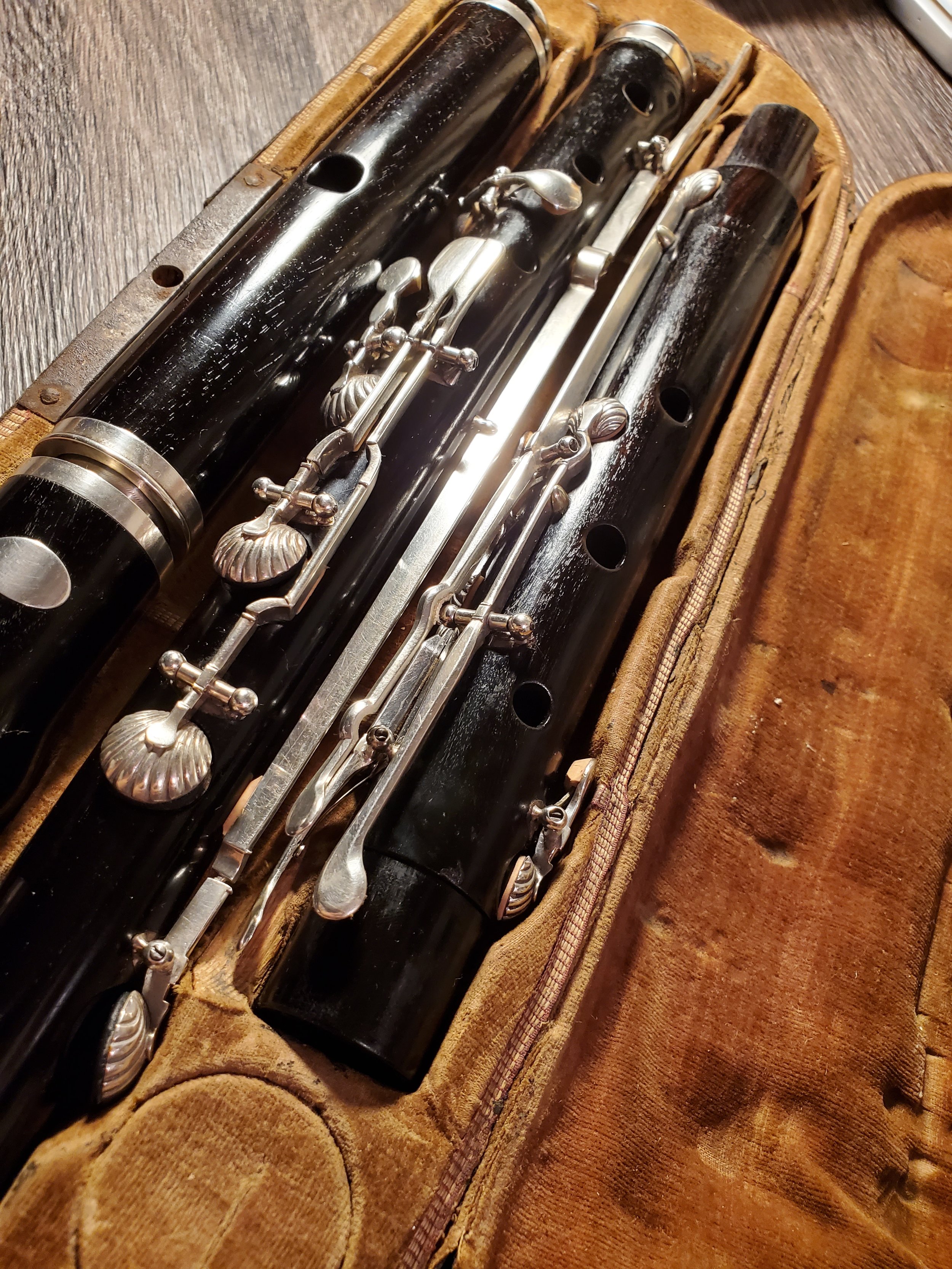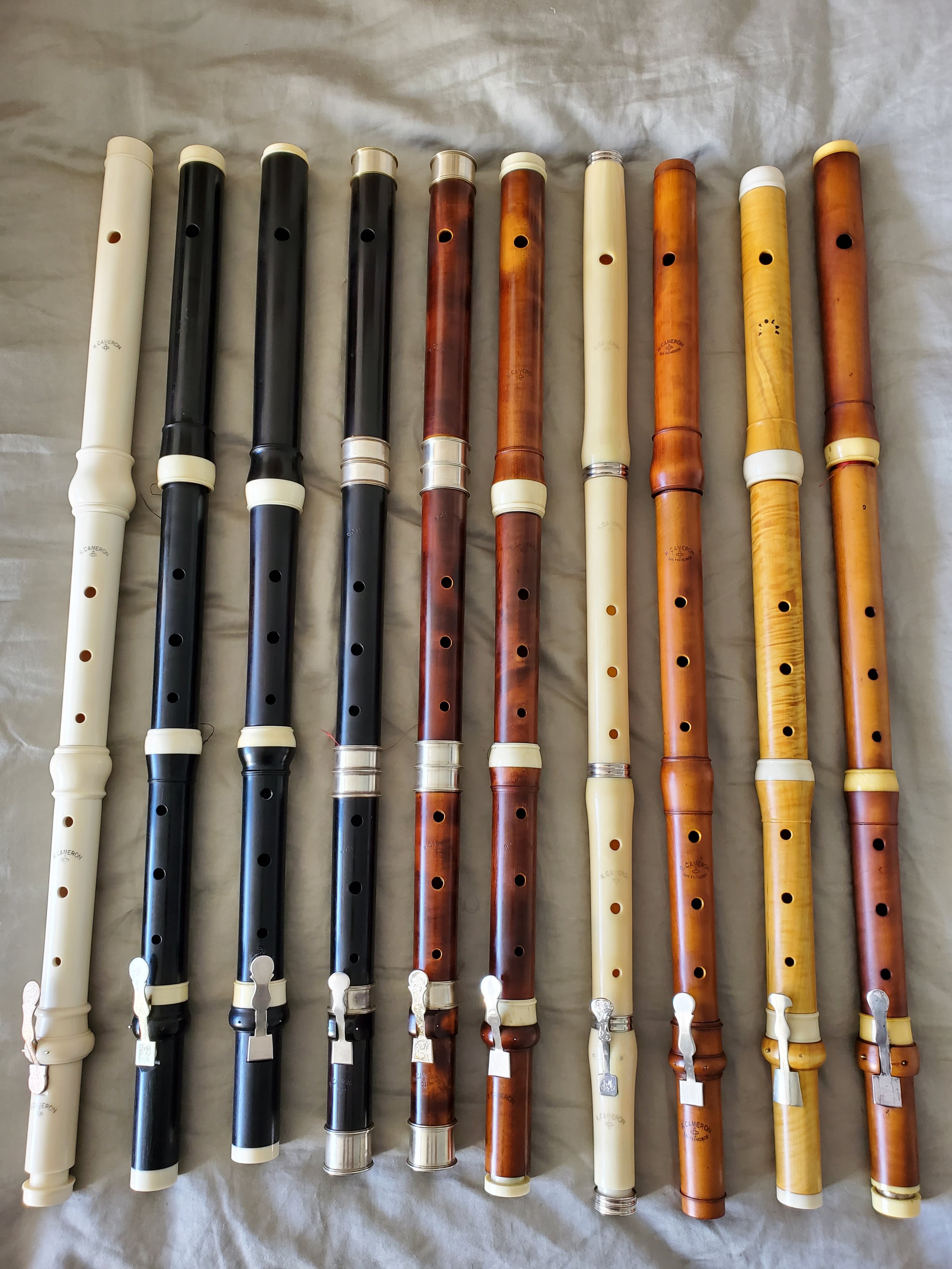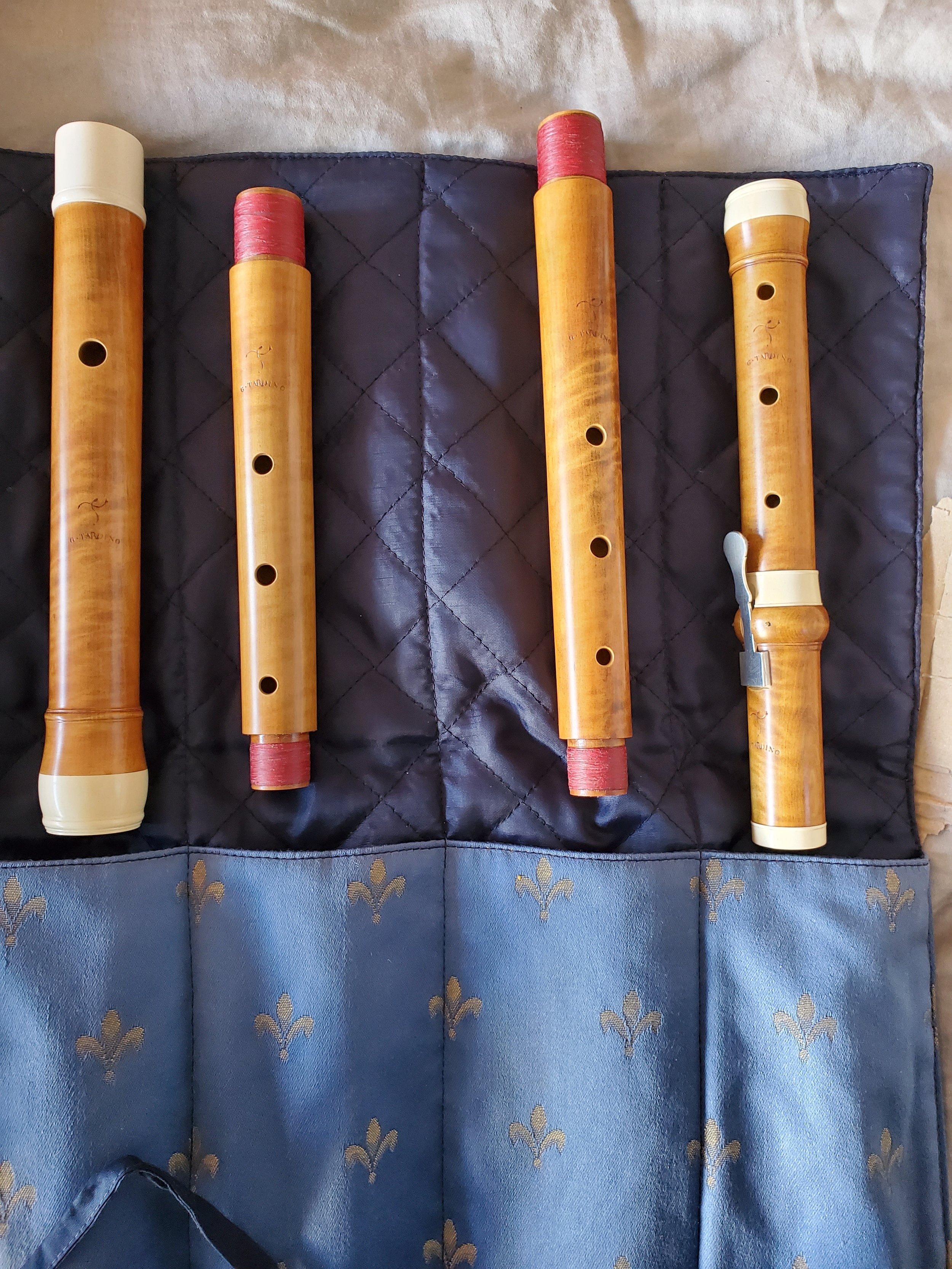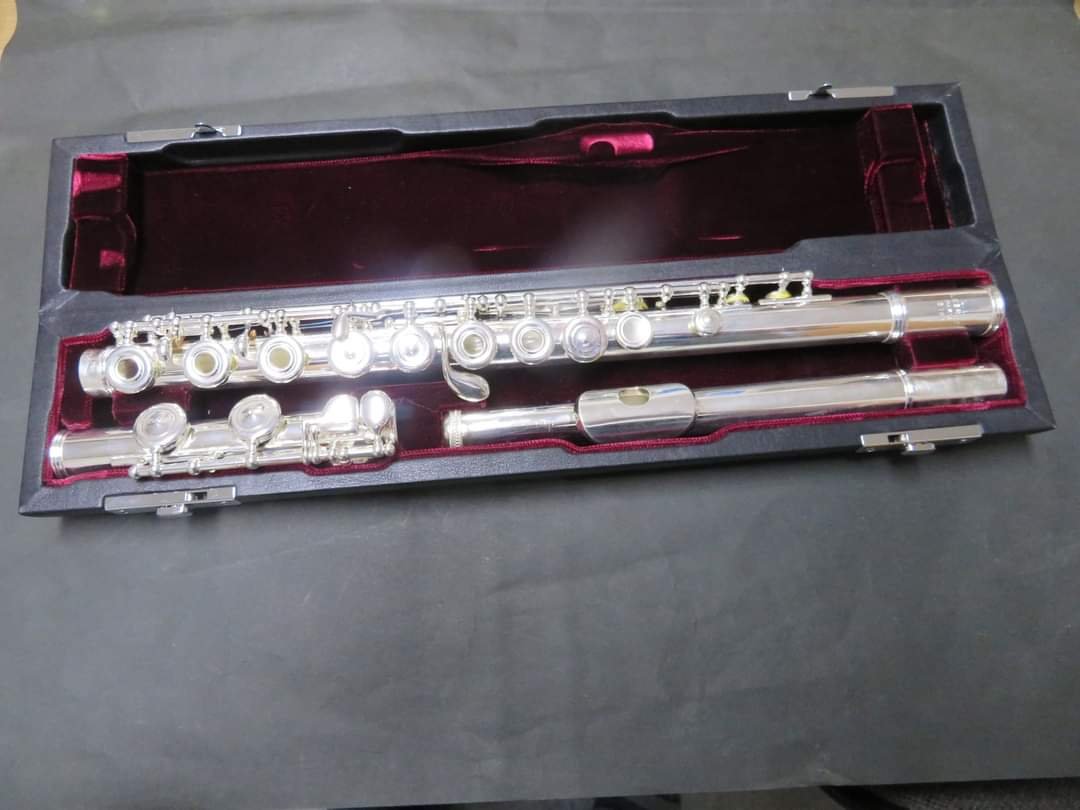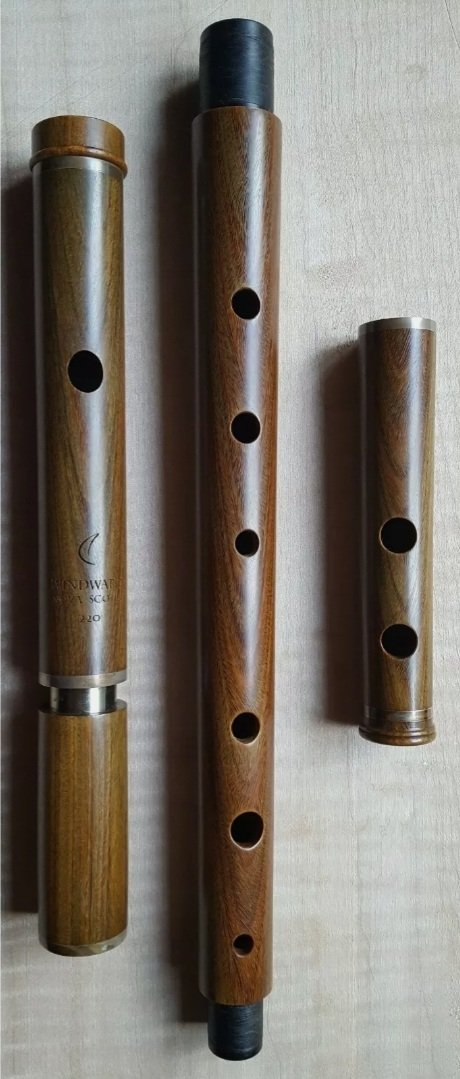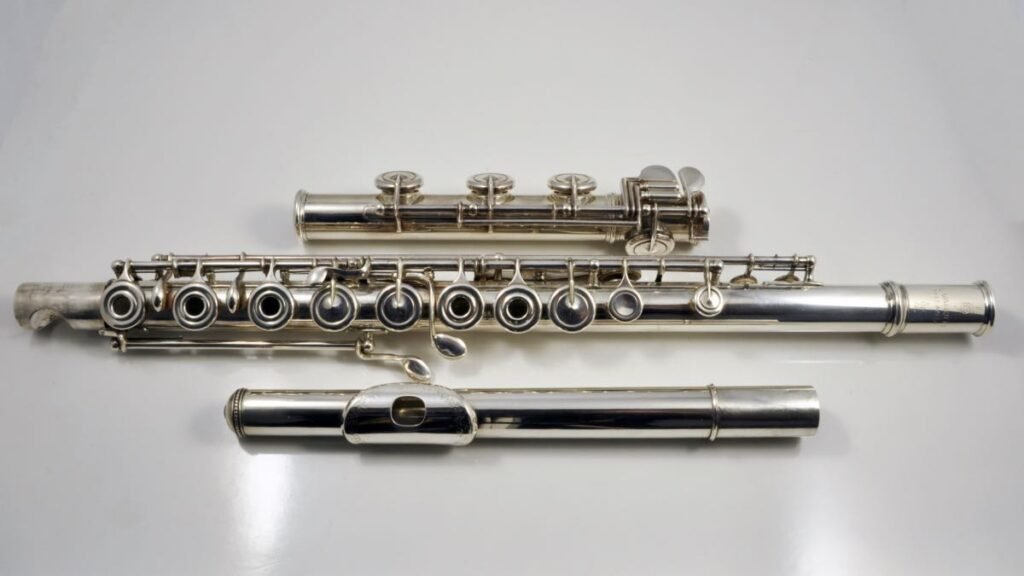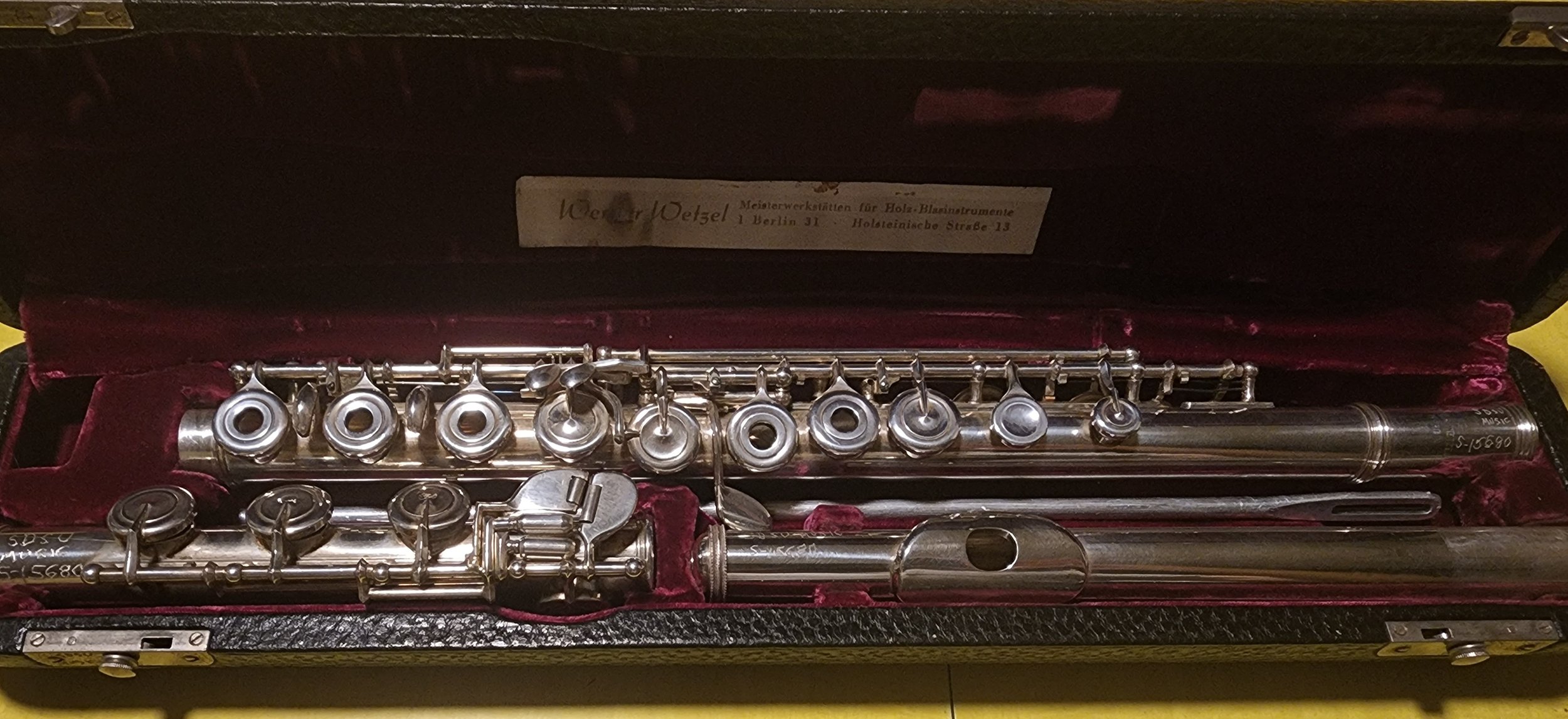For modern flutists who wish to get into the early flute world, selecting an instrument can be a bit overwhelming with all of the choices one has between makers, wood, and models. I am often asked:
“What flute should I buy?” … “Which maker is the best/most affordable/most famous?” … “What difference does the wood make?”
The truth is that there is no right answer to any of these! It is my hope that this page will help those interested in pursuing early flutes make a more informed decision – after all, that is the goal!
On occasion, I will have modern and baroque flutes for sale. You can view them here: Flutes for Sale
Like their modern counterparts, you will find that certain flutes “speak to you” more than others. Ultimately, this is the best way to find your first (and any future) instrument. There are, however, certain tonal characteristics that are attributed to each wood and model which can narrow your pool of choices. While I hope to make some of these qualities clear, there is no substitute for trying the flutes for yourself!
A Few Recommended Makers
(Non-exhaustive list in alphabetical order - they are all fantastic!)
Fridtjof Aurin
Boaz Berney
Rod Cameron
Takashi Nakagawa
Fabio di Natale
Simon Polak
Keigo Takesa
Giovanni Tardino
Alain Weemaels
Martin Wenner
Popular Copies
Italy:
Palanca
Germany:
Oberlender
Denner
(C.)A. Grenser
H. Grenser
J. J. Quantz
Kirst
France:
Hotteterre
Rippert
Naust
T. Lot
Buffardin Fils
Tortochot
Belgium:
I.H. Rottenburgh
G.A. Rottenburgh
England:
Stanesby Jr.
Bressan
Notes on Materials
Boxwood (Buxus Sempervirens) – The most common material of the 18th century, boxwood, especially that of the European variety has been prized for its mellow yet colorful tone. Typically provides a more narrow spectrum of tone color, but retains a warmth in the sound through all registers. A very absorbent material, boxwood can have a tendency to warp, and can be rather sensitive to changes in temperature and humidity.
Grenadilla (Dalbergia Melanoxylon) – A modern favorite, though less historically common than ebony, grenadilla is an extremely stable material with impressive hardness that provides a tonal spectrum ranging from bright to dark, round to edgy. (Of course, this also depends on the model of flute!) I recommend grenadilla to all who wish to have a shelf-stable, all-purpose flute with little hassle. (New grenadilla will frequently smell of vanilla if you scratch it with your fingernail.)
Ebony (Diyospiros Ebenum) – The most common “blackwood” of the 18th and 19th centuries, this material can be difficult to distinguish from grenadilla. Ebony tends to provide a bright, edgy, and articulate sound when used for flutes, but can sometimes lack the darkness and depth offered by grenadilla. In my opinion, ebony should be purchased only by those who are familiar with the care of wooden instruments due to its nasty tendency to crack. For this reason, I do not recommend it to individuals who travel often, play infrequently, or live in cold/dry climates. (While this is a risk for all wooden instruments, one must take additional care with ebony!)
Maple – While standard for baroque and modern bassoons, maple is typically reserved for cheaper, entry-level baroque flutes. (Flute makers Forbes and Yola Christie of Windward Flutes in Nova Scotia have worked magic with their Canadian Maple Irish flutes. I expect we may see professional-level maple instruments before too long!) I find that flutes made from maple and lighter fruitwoods can suffer from the softness of the material, especially since modern flutists are so used to the “darker” woods. For my taste, maple does not provide enough clarity in articulation, variation in tone colors, or volume to be as viable or practical as the other materials mentioned here.
Rosewoods, Cocus (Brya Ebenus), & Lignum Vitae – Long used in the manufacture of woodwind instruments, these “exotic” woods were symbols of wealth, social standing, and good taste in the 18th and 19th centuries. While some rosewoods can have a wide grain that is not so conducive to flutemaking, Cocus and Lignum Vitae are some examples of historically-used exotic woods with great levels of density and tightness of grain, which I find leads to sharp, clean articulation and a brightness of sound. In general, Rosewoods do not pack the punch that Ebony and Grenadilla instruments provide, but reward generously in their range of tone colors, despite sometimes being more “polite” in their volume. (The later you go, and the more towards England you go, this changes quite a bit, as the cocus simple-system flutes of Rudall & Rose can blow the cocus Boehm system flutes by Buffet out of the water in terms of volume!)
Ivory – Certainly the most problematic material listed here, ivory represents one of the most important materials in the history of flutemaking. Whether used for decorative rings or the body, ivory was a very popular material, particularly among the aristocracy and wealthy merchant classes of England and Europe for much of history. It is known that Henry VIII owned several transverse flutes in ivory (Renaissance-style flutes, of course). Friedrich the Great was clearly a fan of ivory instruments, owning several now maintained in private and public museum collections. The material is frequently featured in private portraiture and depictions of court life. Ivory is an incredibly heavy material, and when fashioned into an entire flute, they are often a great deal slimmer than the wooden counterparts by the same maker, a technique meant to trim down the overall weight of the instrument for the comfort of the performer.
On Oiling Flutes
While there is no one school of thought on oiling a flute, I thought it would be beneficial to share with you my methods here.
I use only Sweet Almond Oil* and Orange Essential Oils for my flutes. You can find both of these at your local Whole Foods, skincare, or health stores.
Mixing these two oils, I follow Martin Wenners recipe for 70% Sweet Almond, 30% Orange. (The main purpose of the orange oil is to not only provide a pleasant aroma, but also for a very little cleansing property.)
I like to use a bamboo dish rack from Ikea or Amazon as a makeshift baroque flute stand when doing my monthly oiling.
1: Gather your flute(s), and set them out on a stand. At this point, if you feel comfortable removing the headjoint cork and have an appropriately sized dowel that will not dent or damage the base of your cork in removal, then you may wish to do so. (This is not a necessary step, but some people do it every time – I am not one of them!)
2: Take a paper towel or handkerchief, and mix a majority of almond oil with a few drops of orange oil. This will be what you use to oil the outside of your flute(s). Rub the oil into the flute bodies using a circular motion.
NB: This does not have to be done to the footjoint, but if you do, make an effort to avoid getting oil on the pad of the Eb key.
3: Once the exterior of the flute is nicely oiled, place a corner of your handkerchief through a cleaning rod, and wrap the fabric back around the tip of the rod to create a Q-tip-like effect. Saturate the tip with almond oil and a few drops of orange oil.
4: Run the kerchief through the bore of your headjoint, rotating as you go. (This ensures even coverage of oil on the bore.) Once you feel the rod hit the cork, stop, and continue rotating the cloth as you back out of the headjoint.
5: Repeat with all joints except for footjoint, and reapply oil as necessary.
6: Leave flute out on dish rack stand overnight to soak in the oil. (Keep out of direct sunlight and reach of cats!)
7: The following morning, wipe off any excess oil from the exterior, and store the flute. It is not necessary to swab out any oil left on the interior of the bore.

